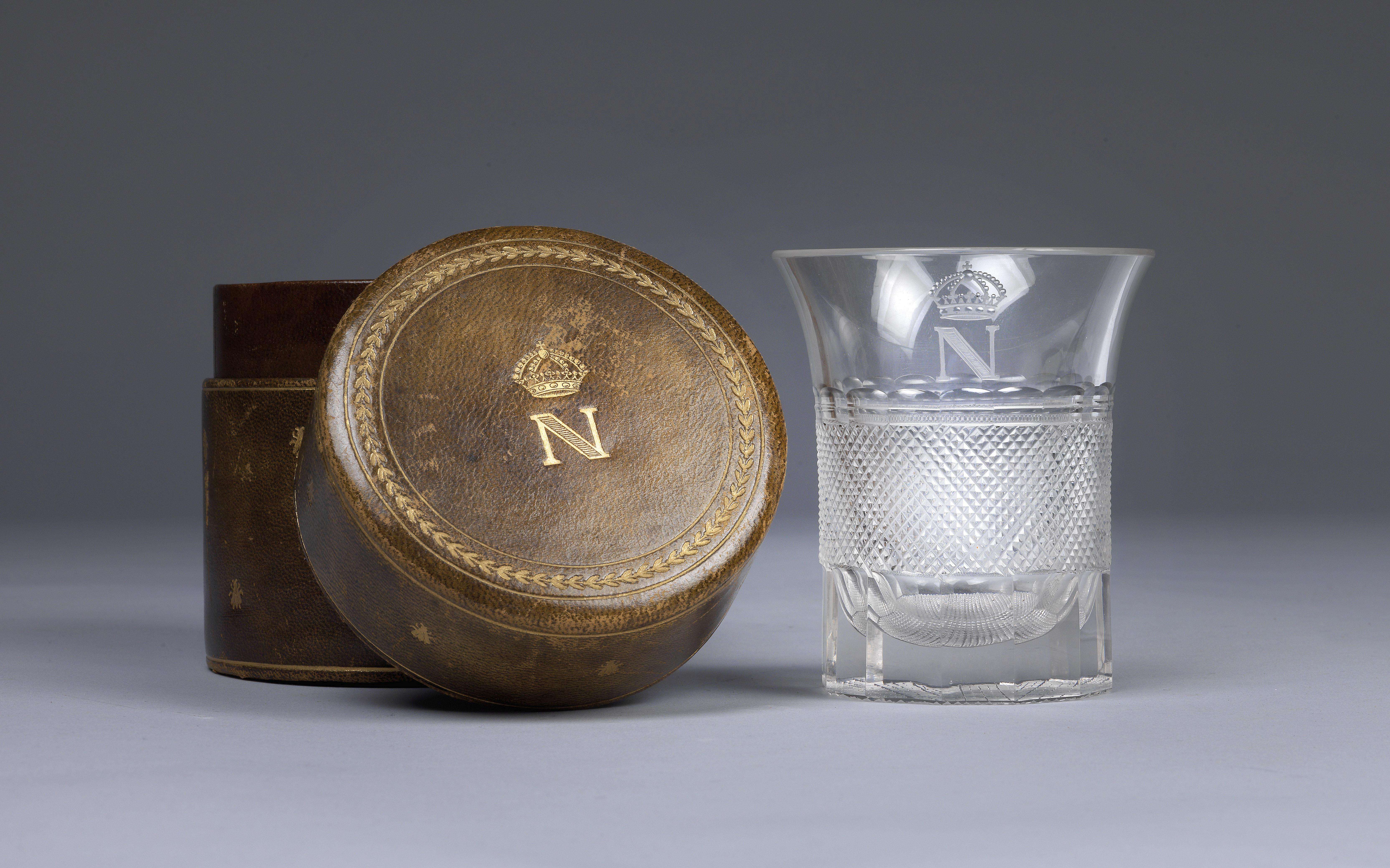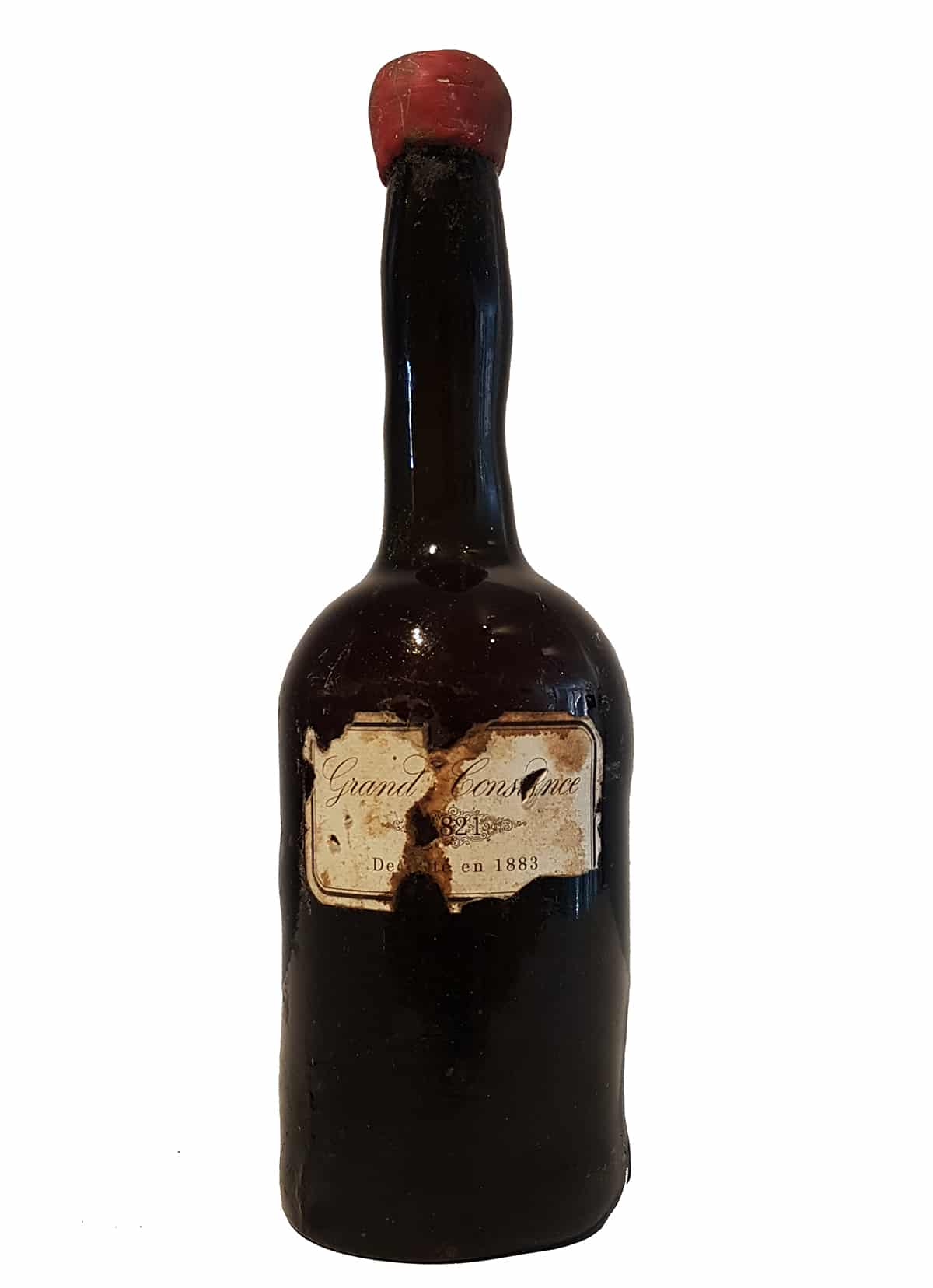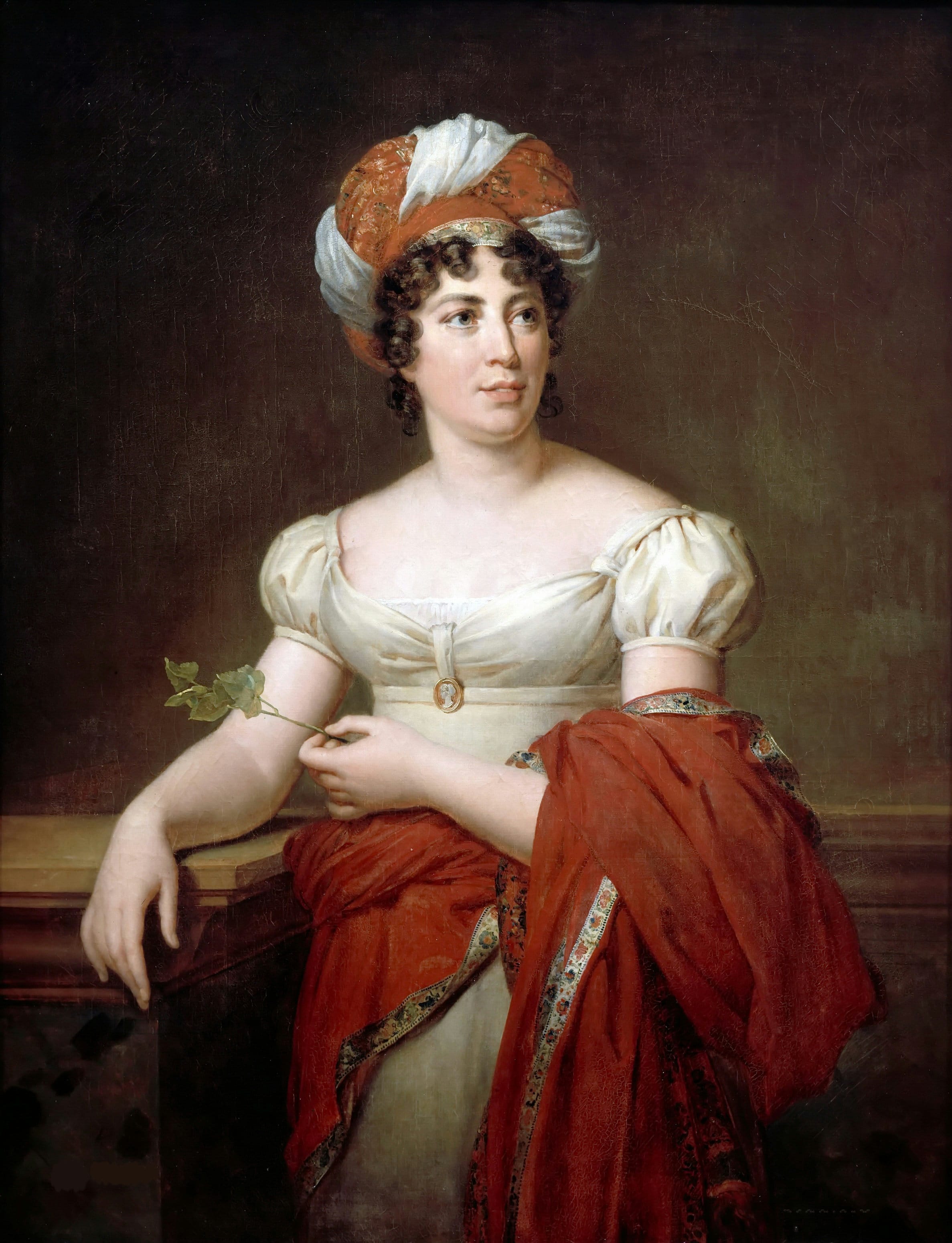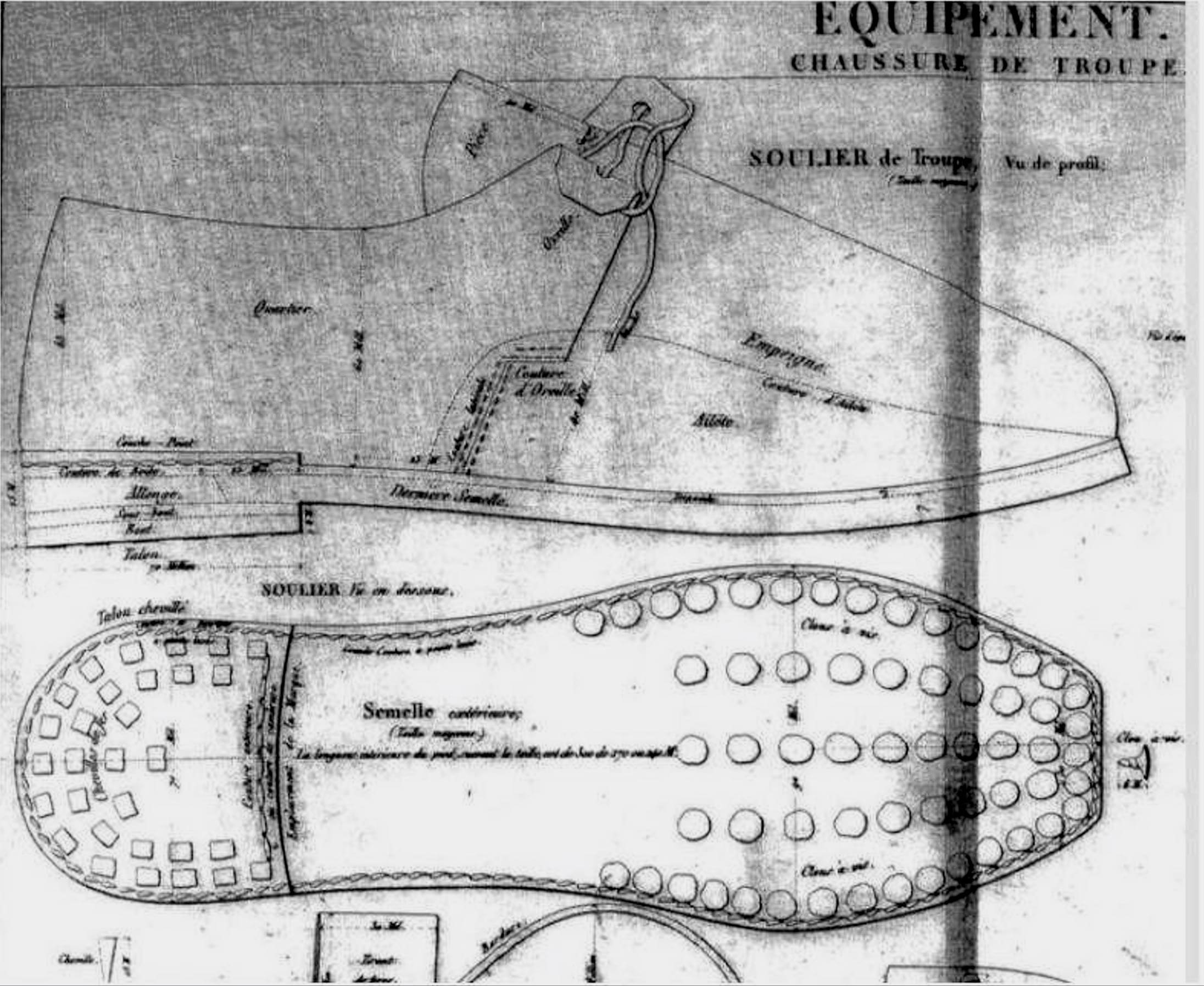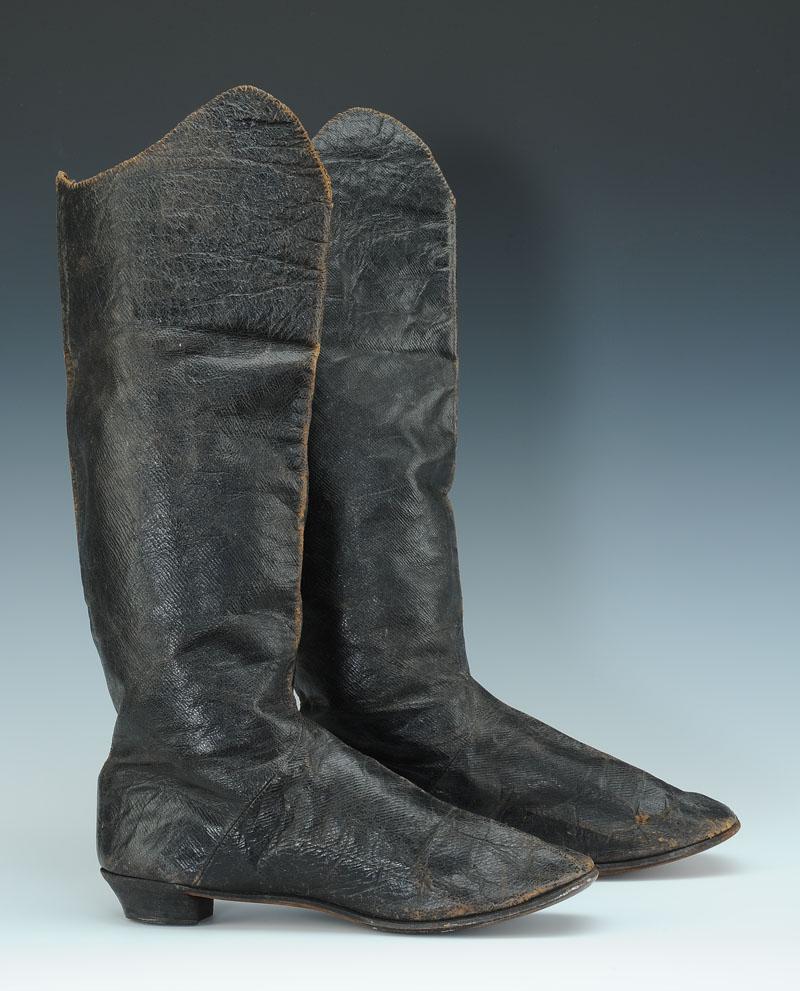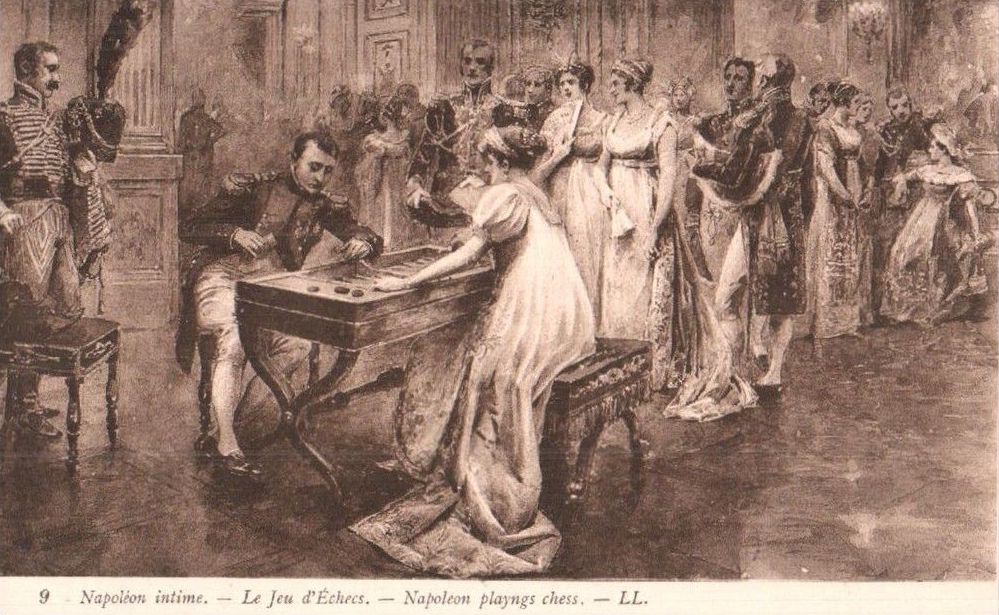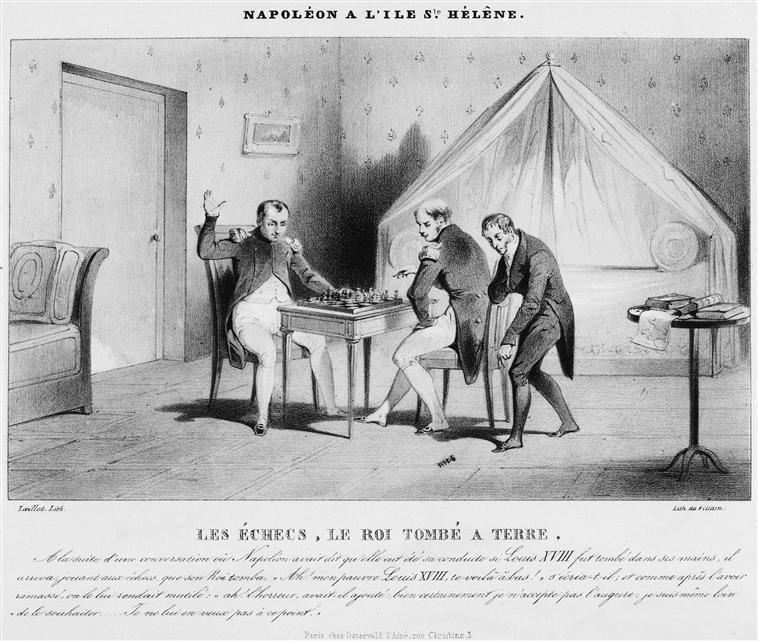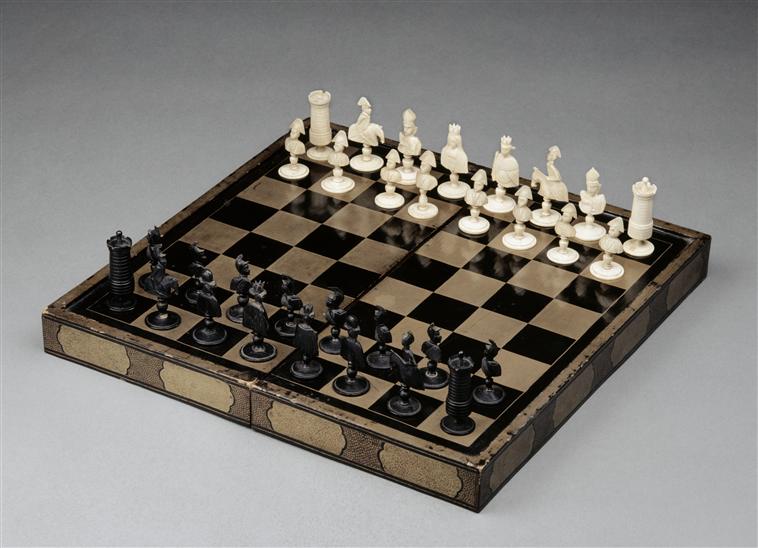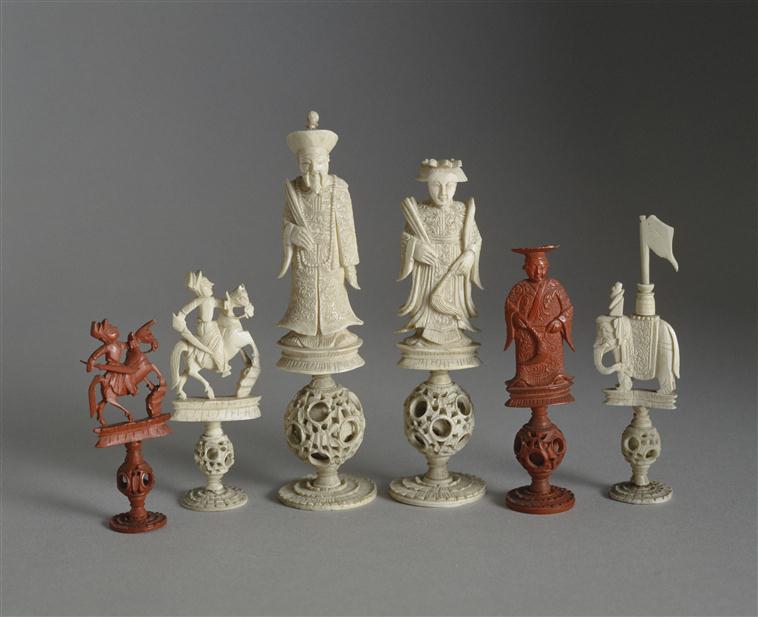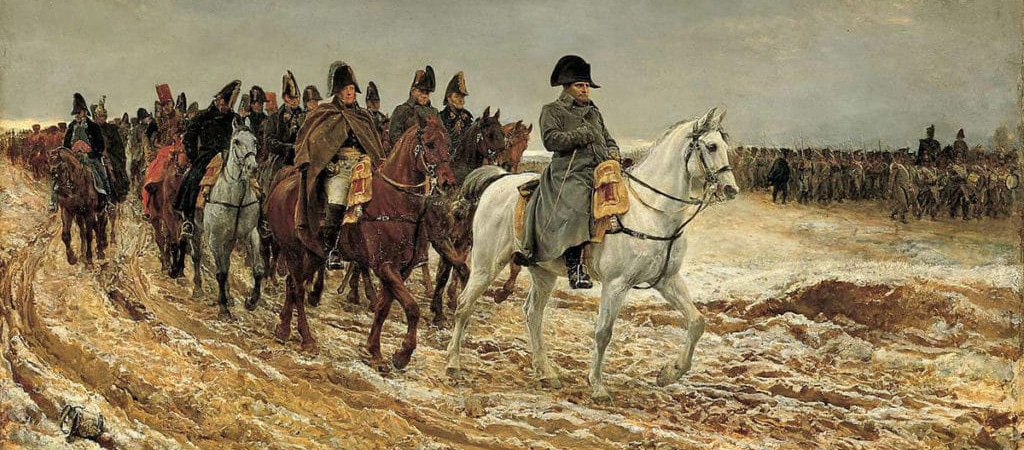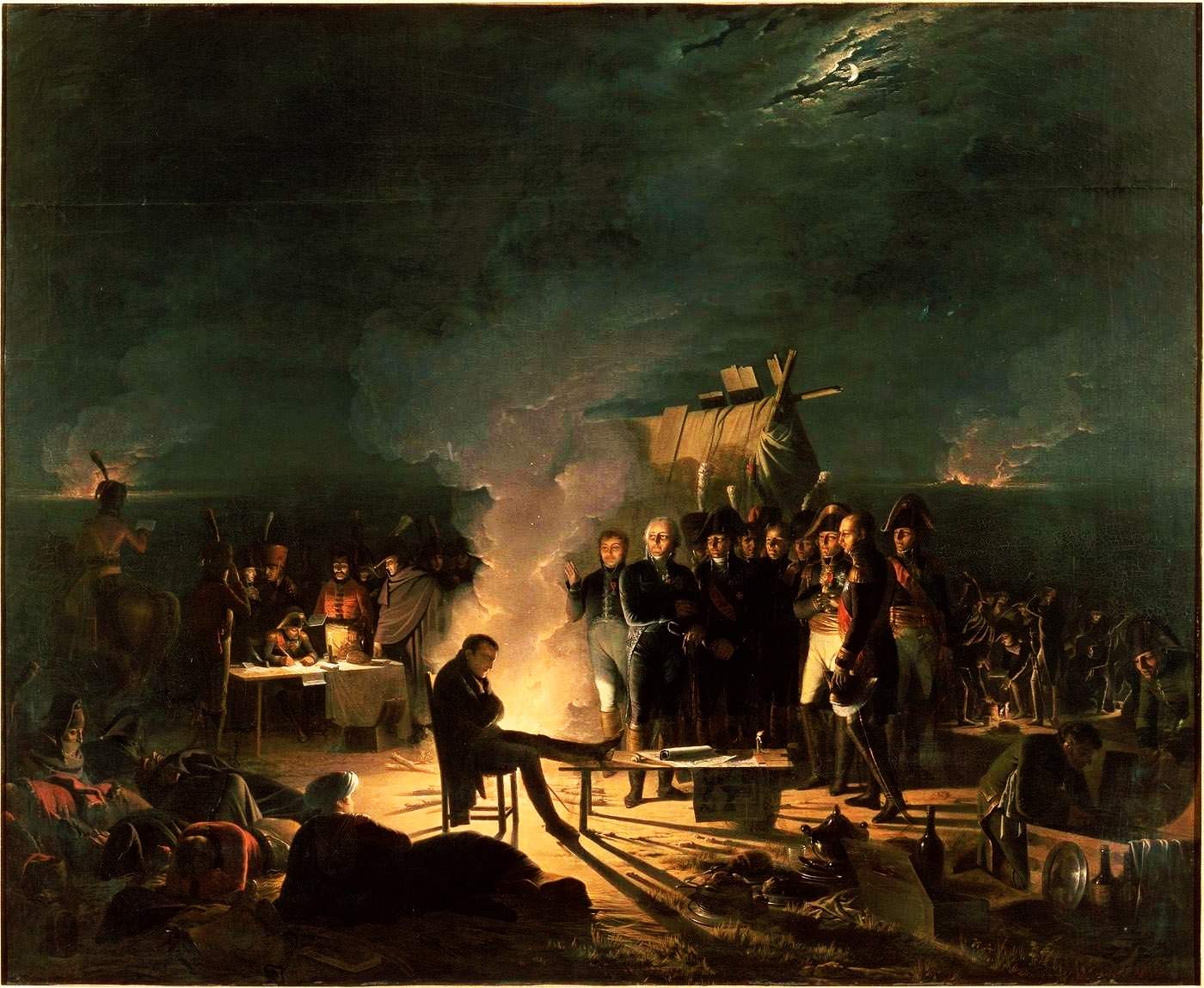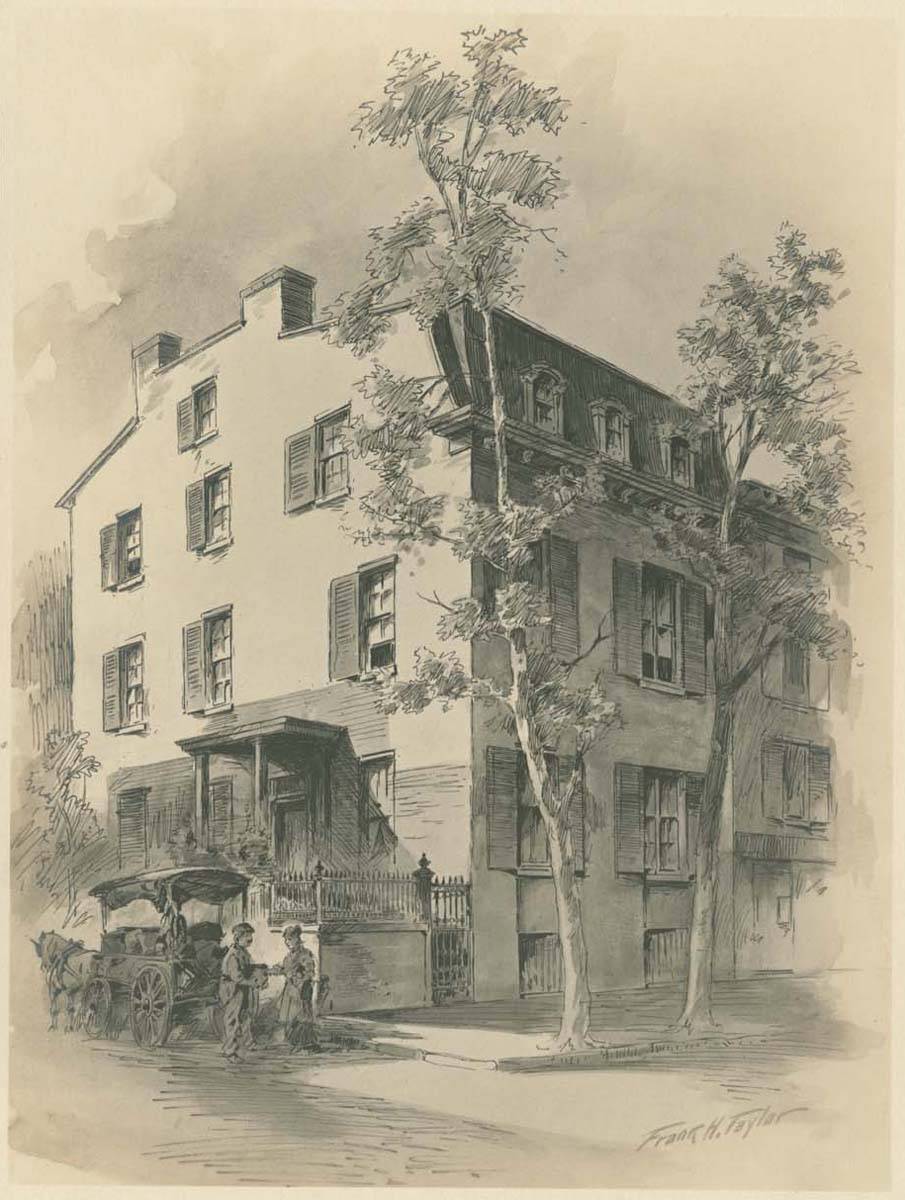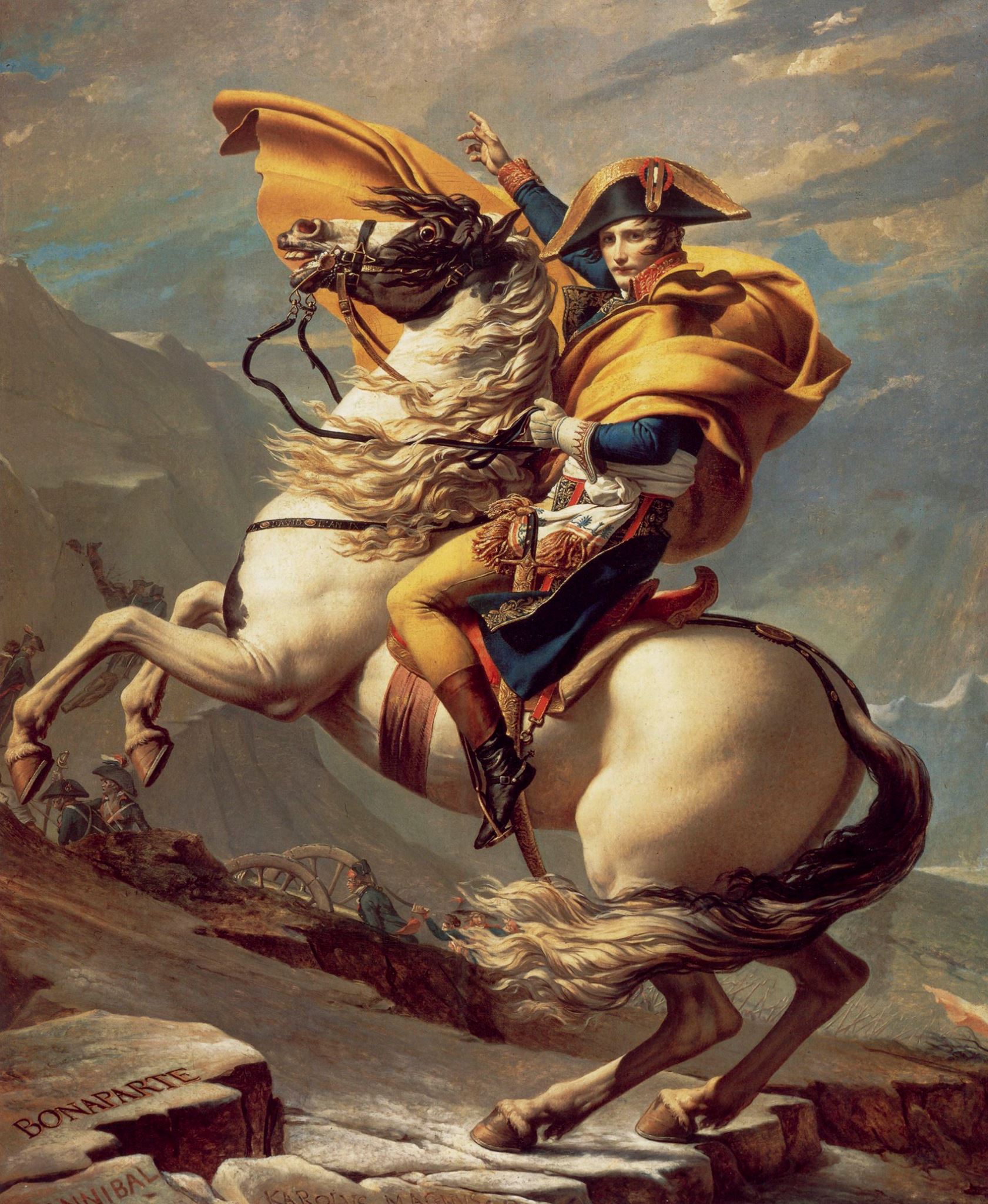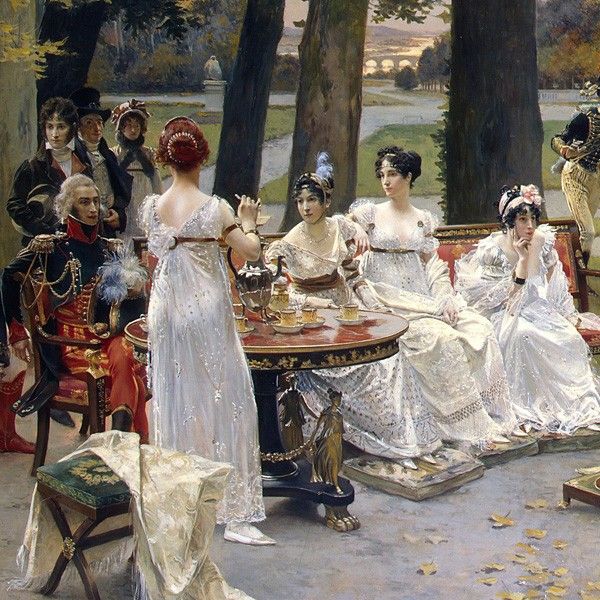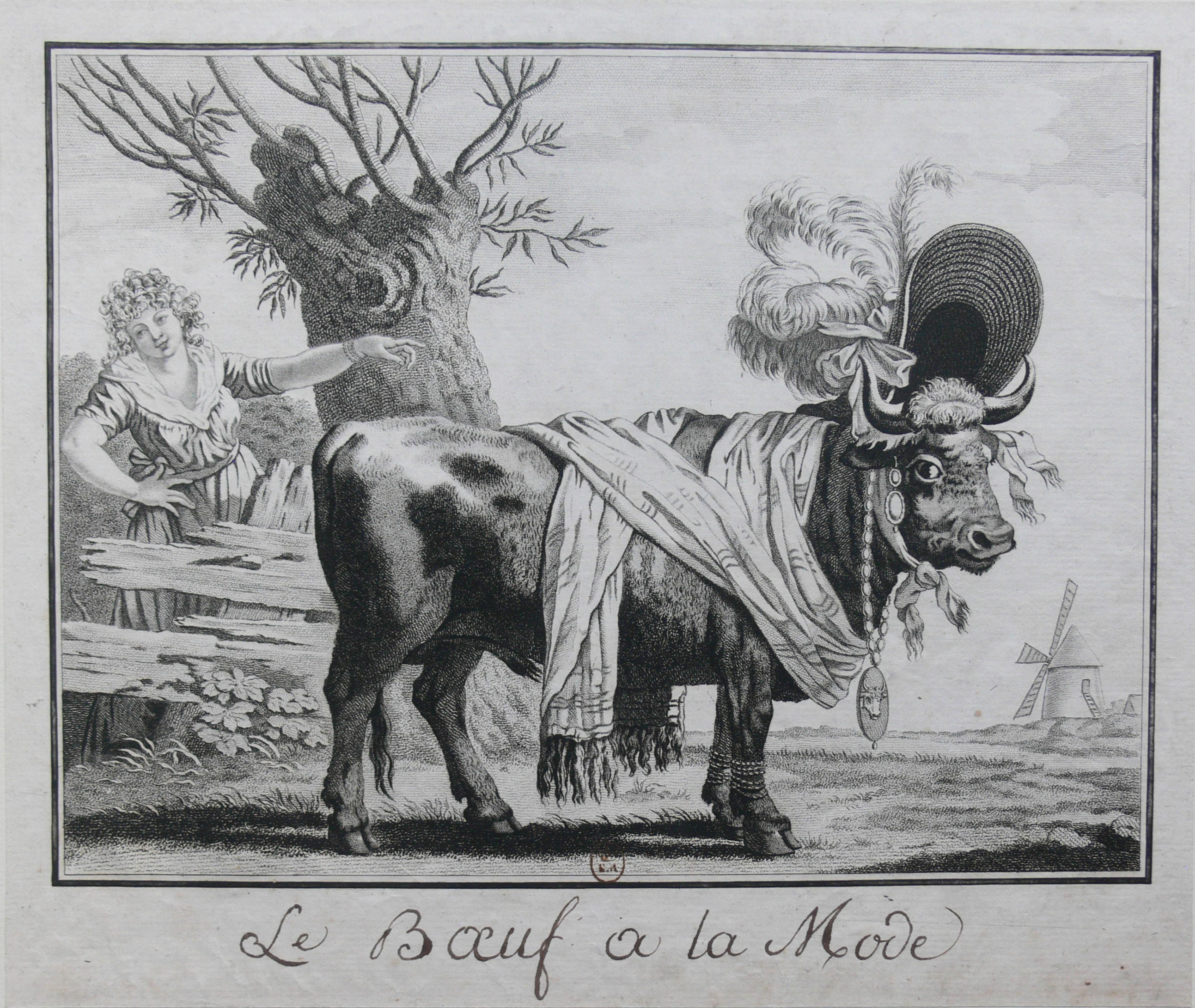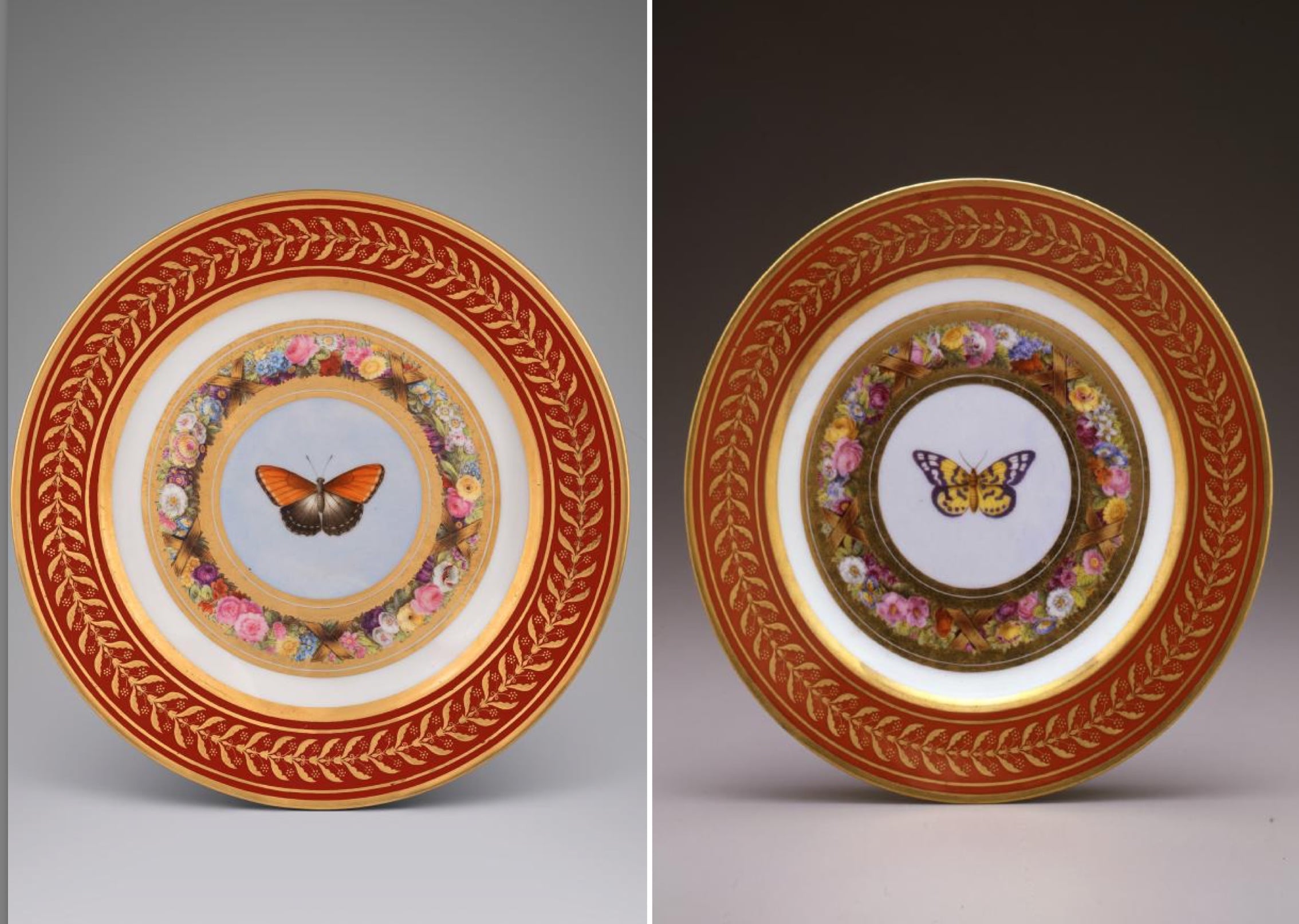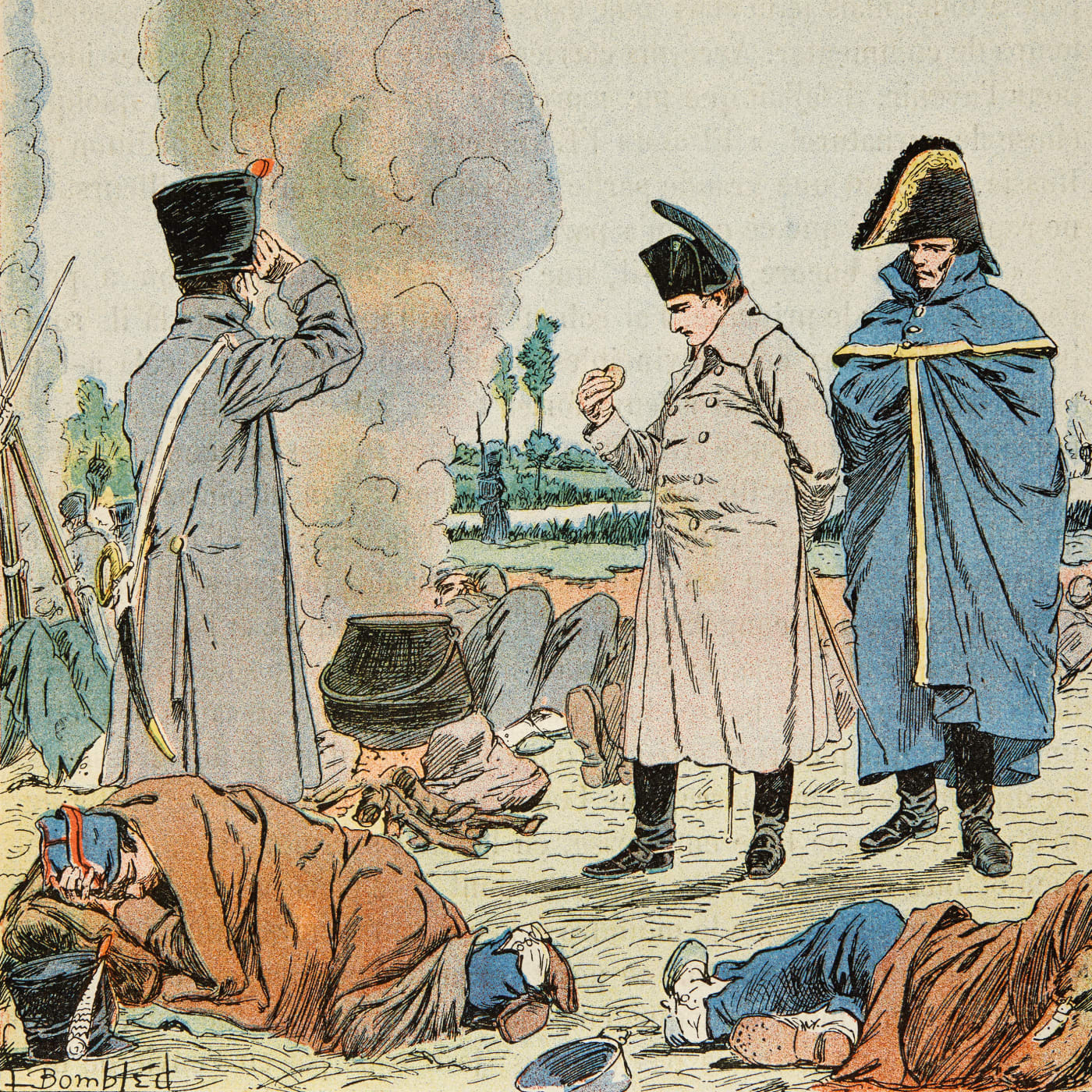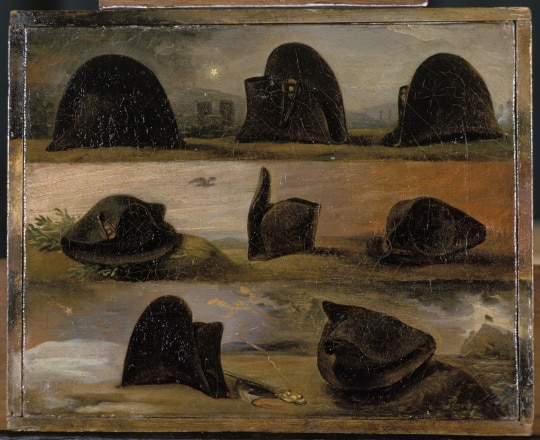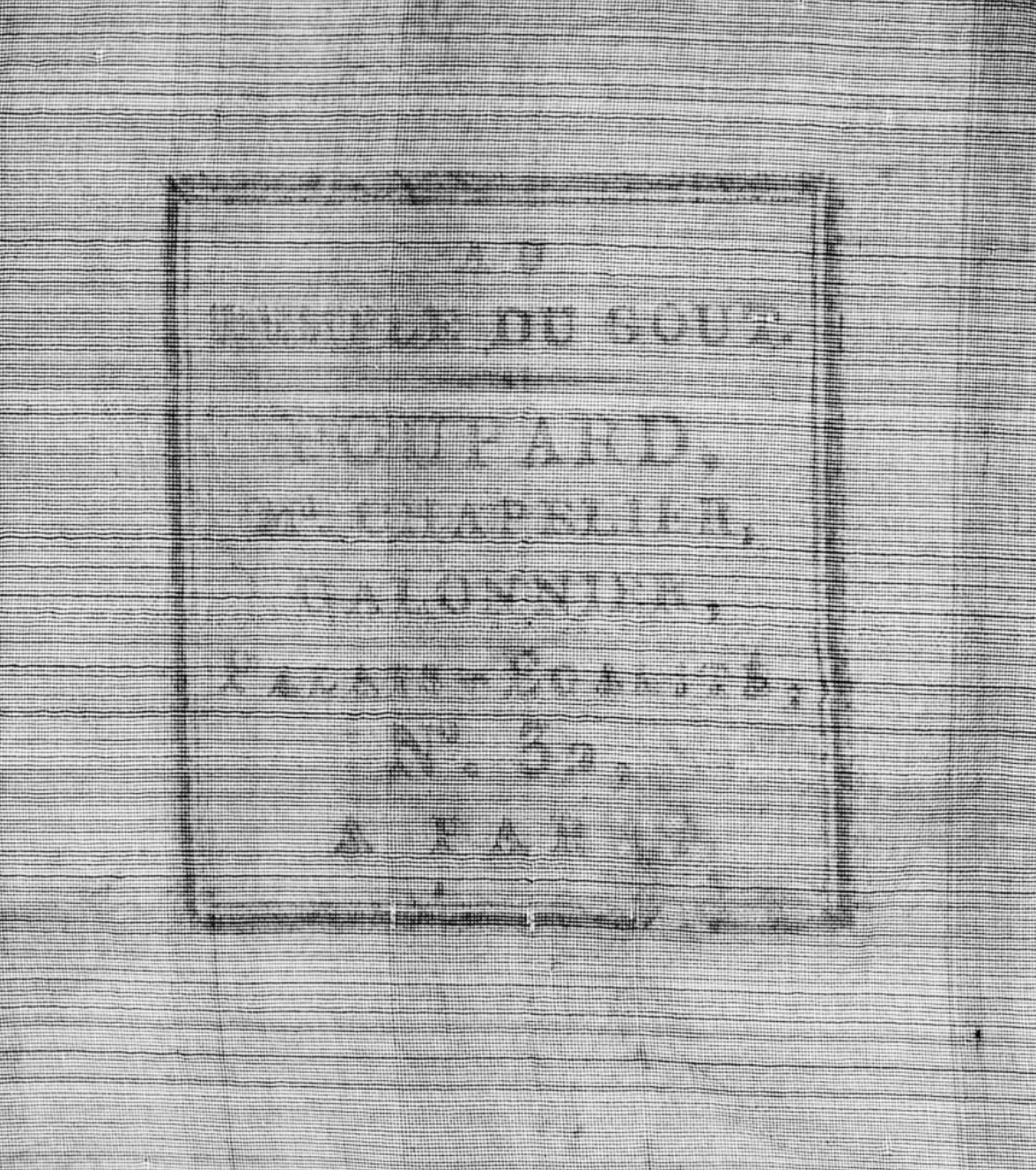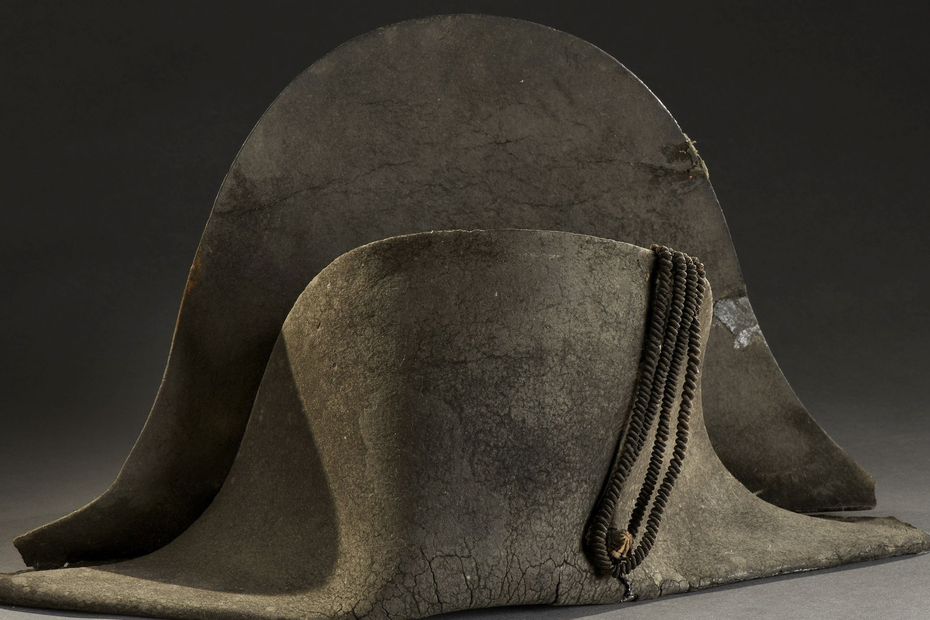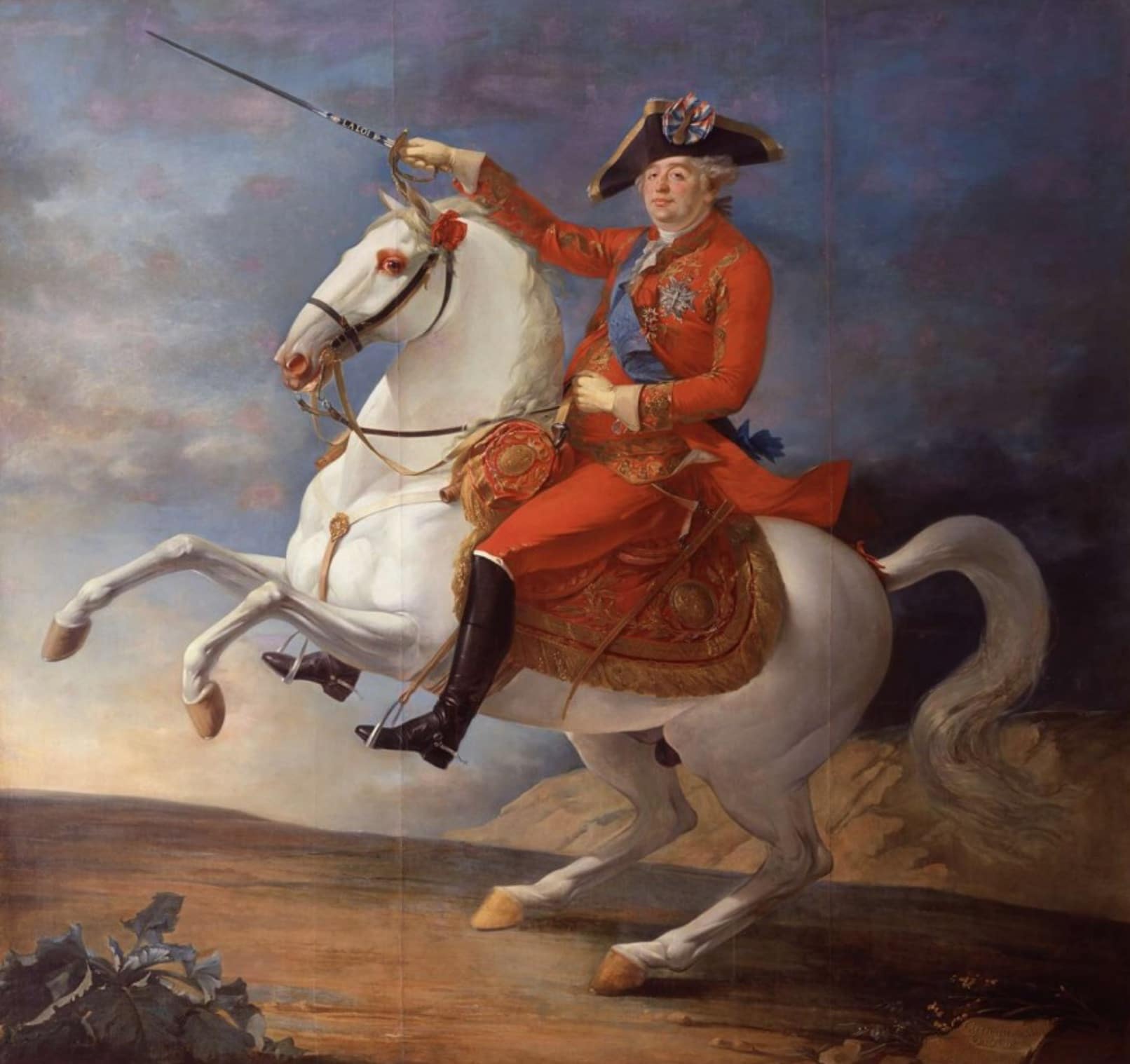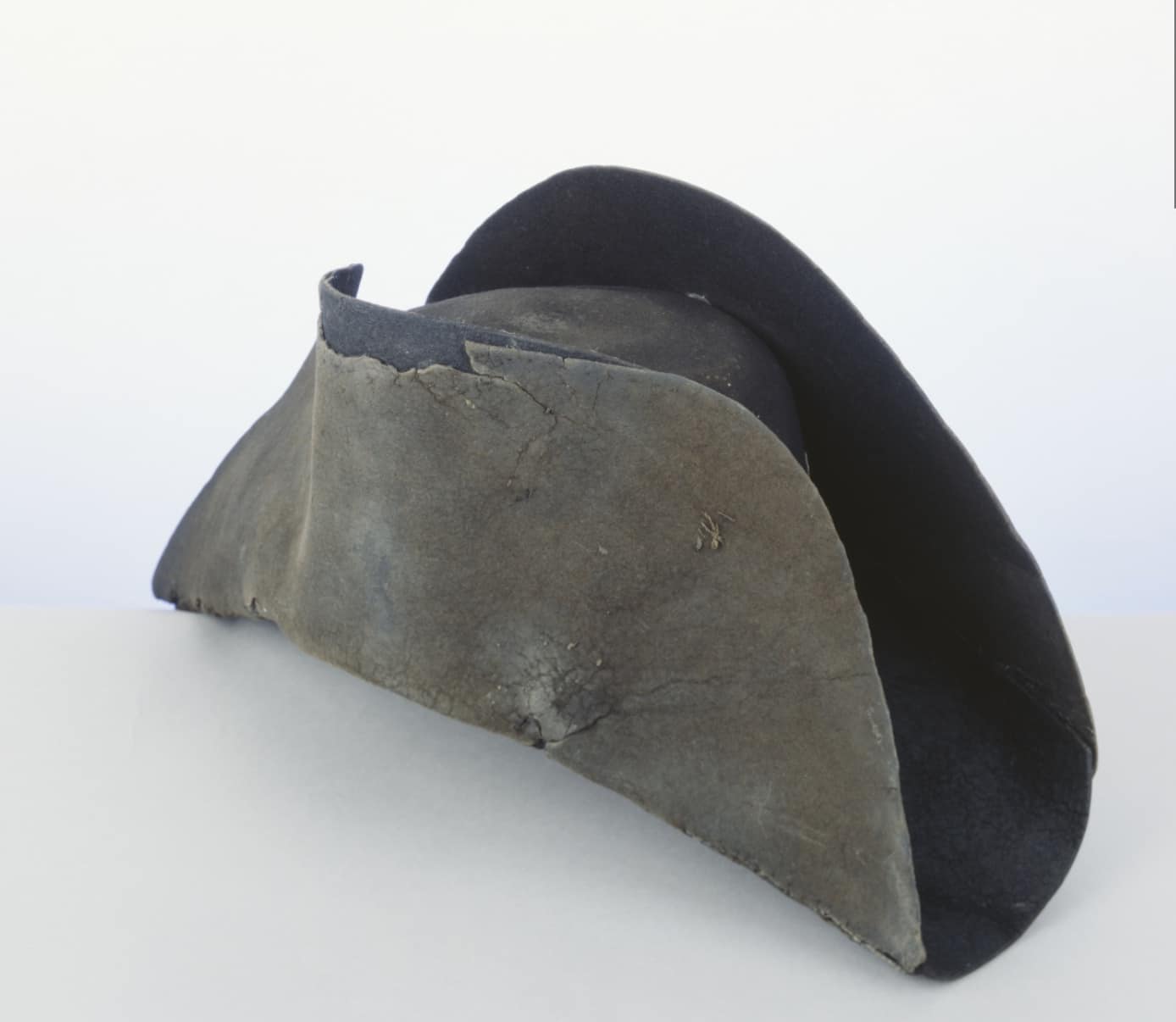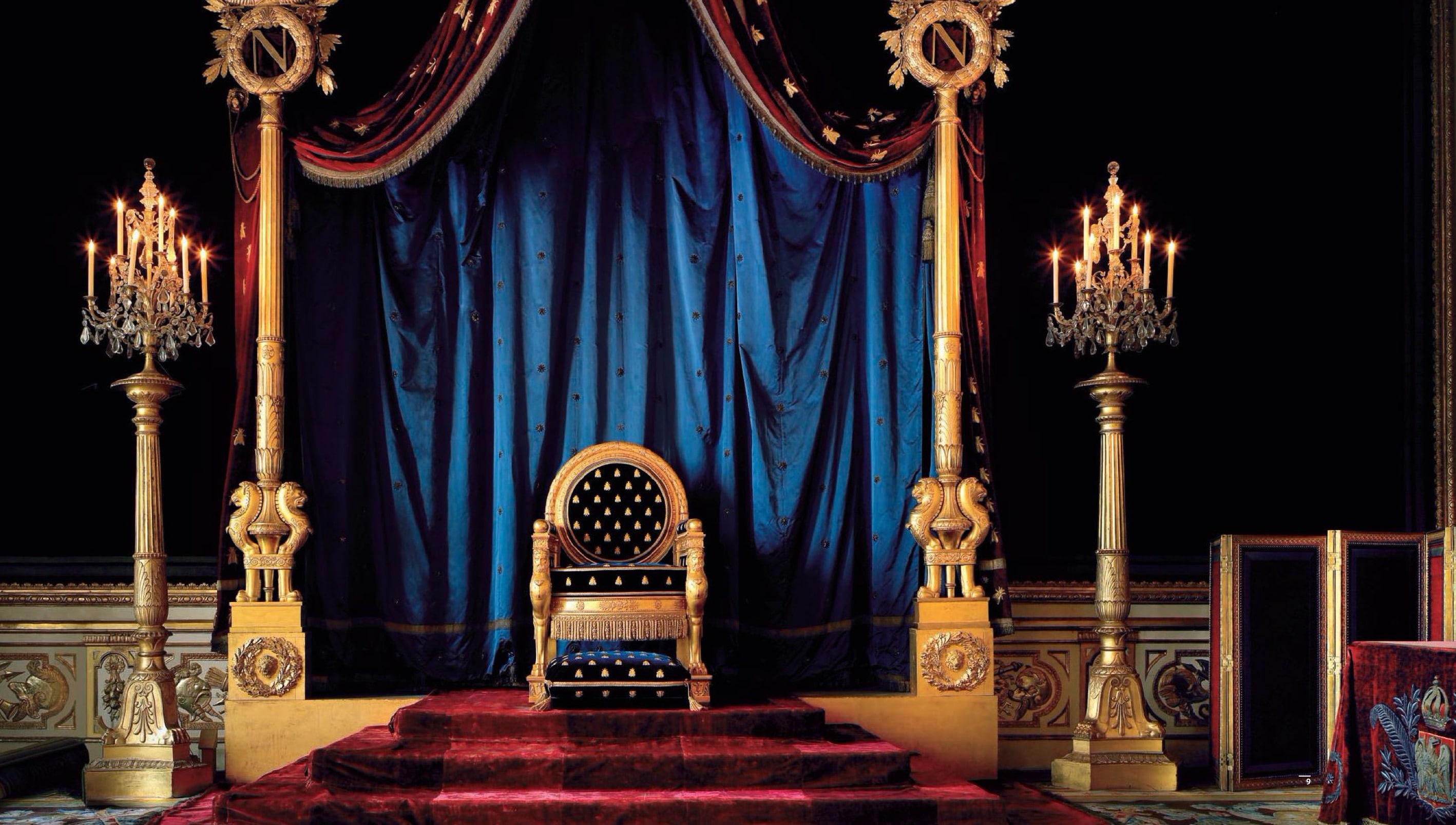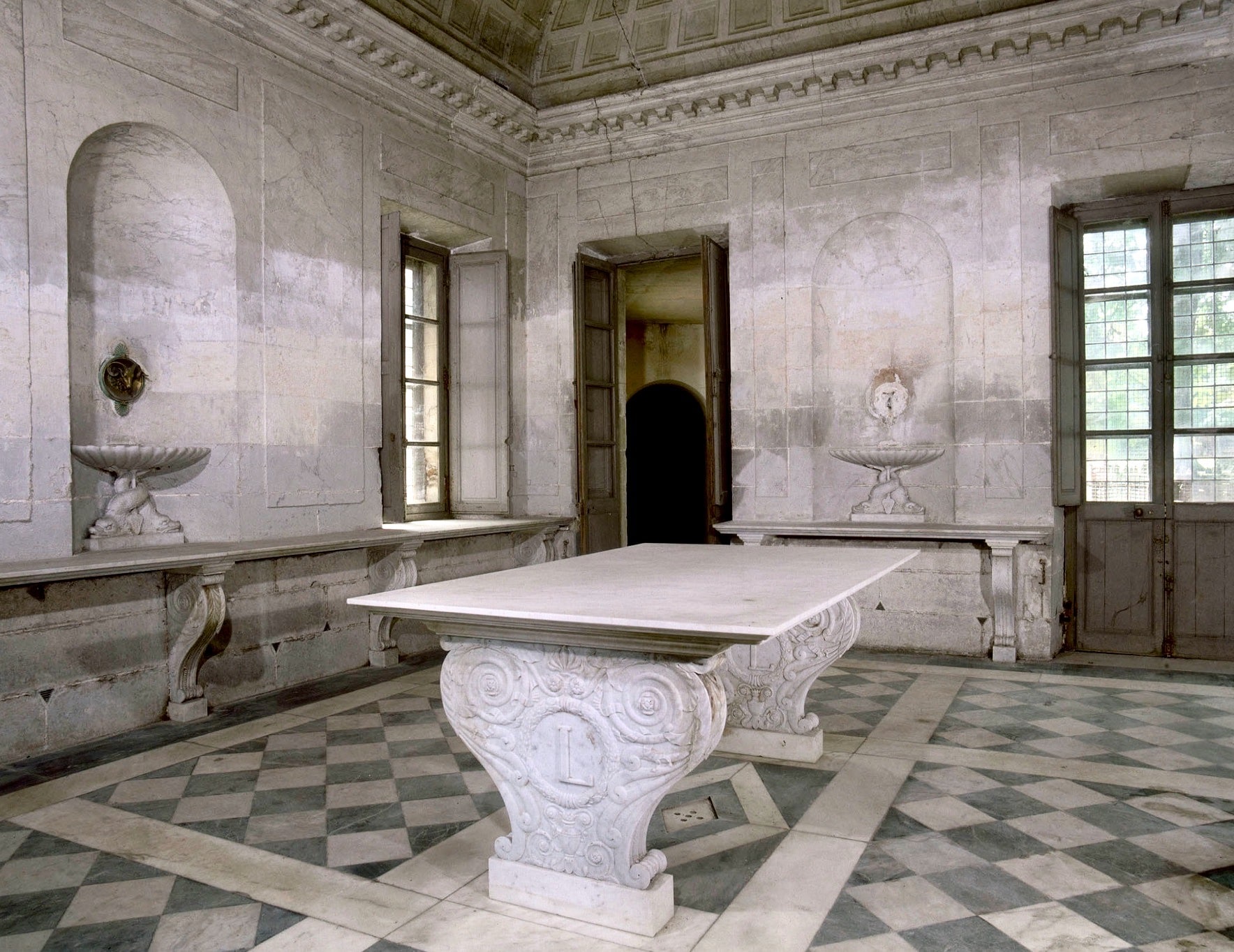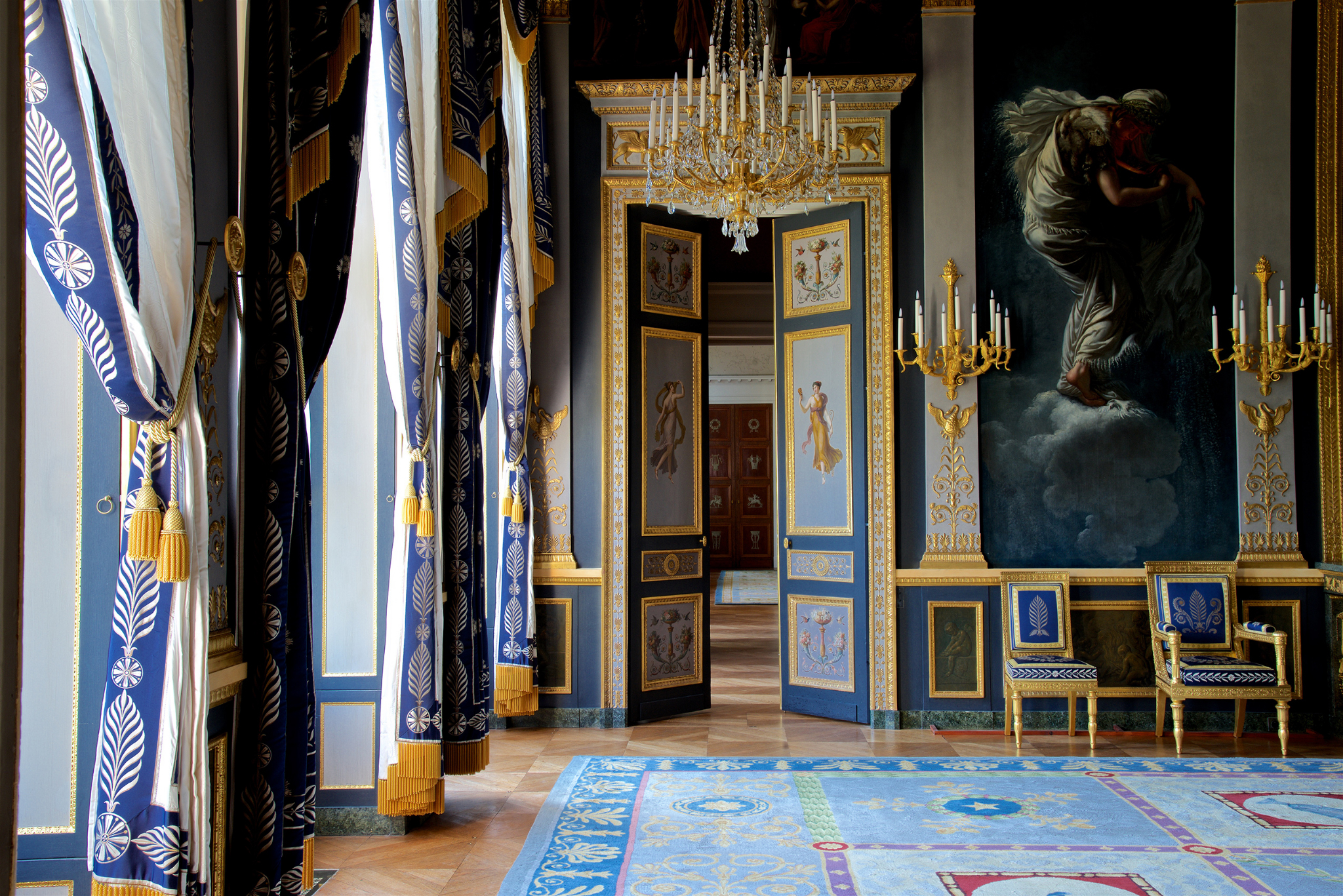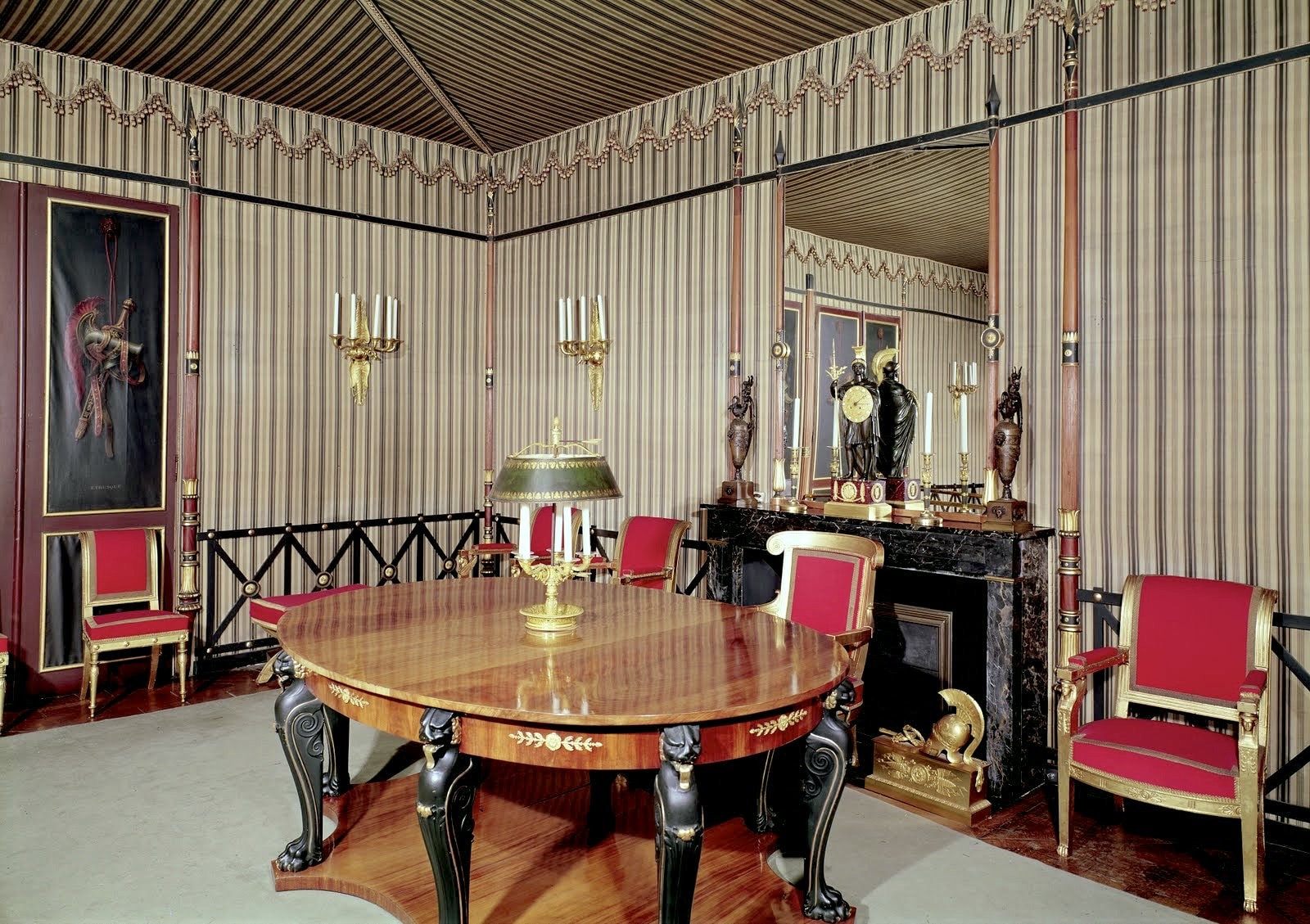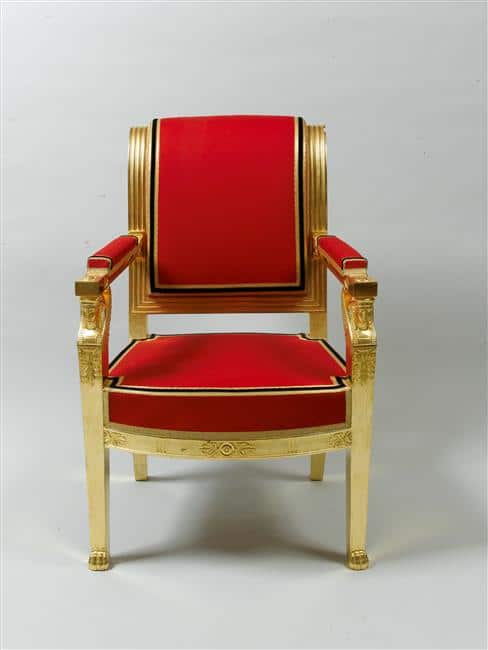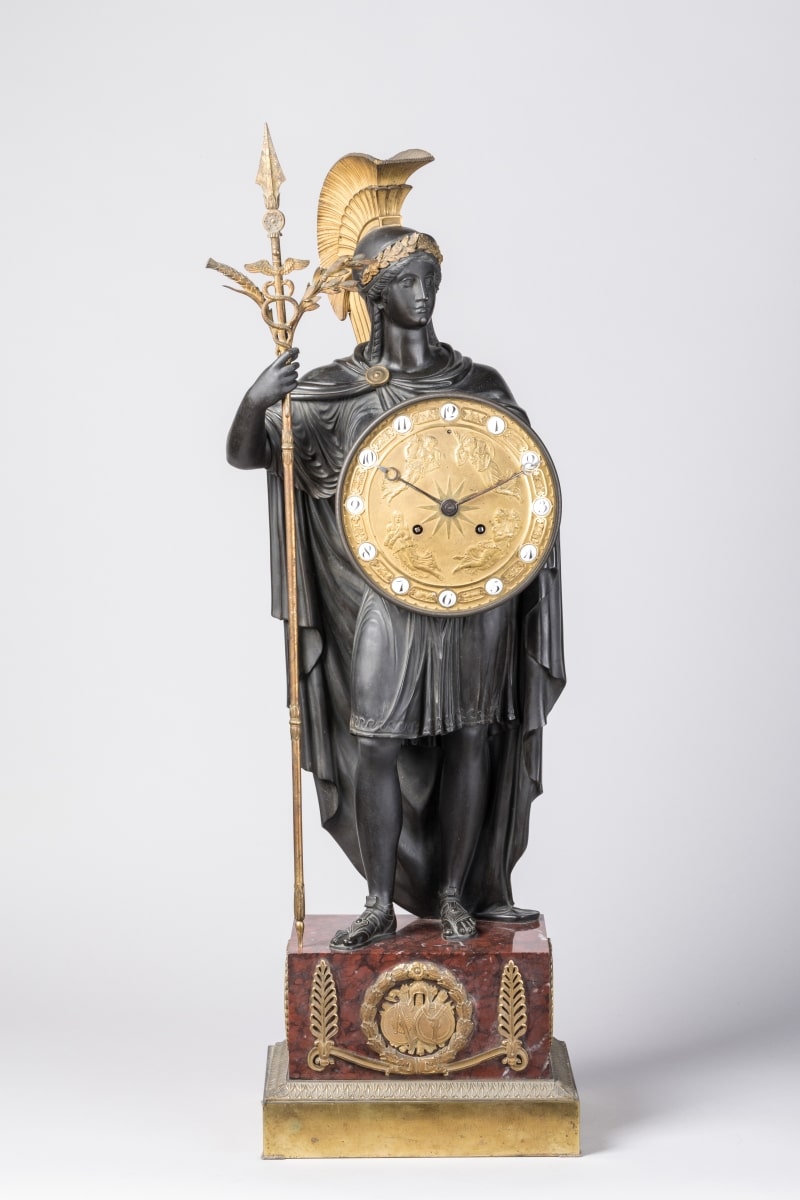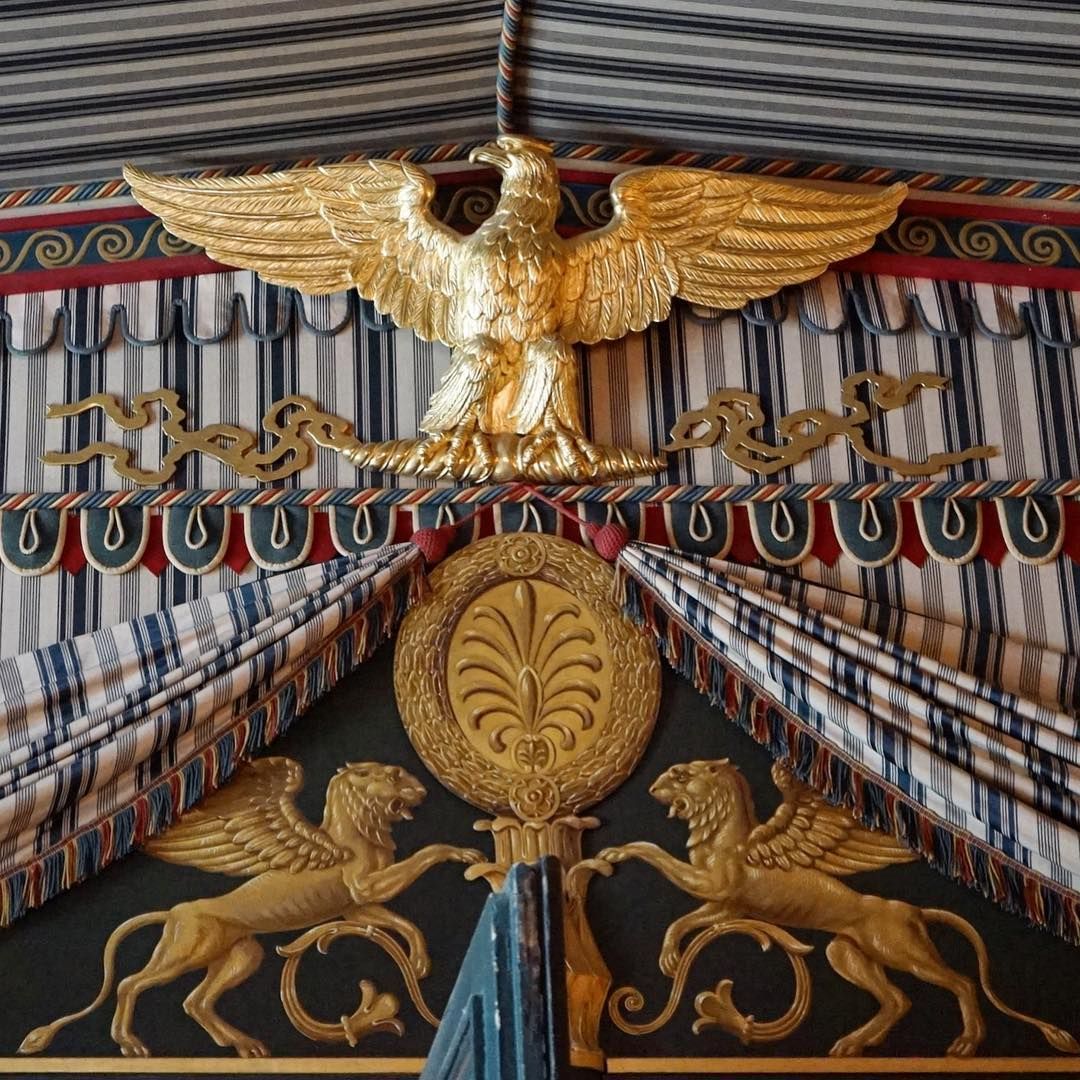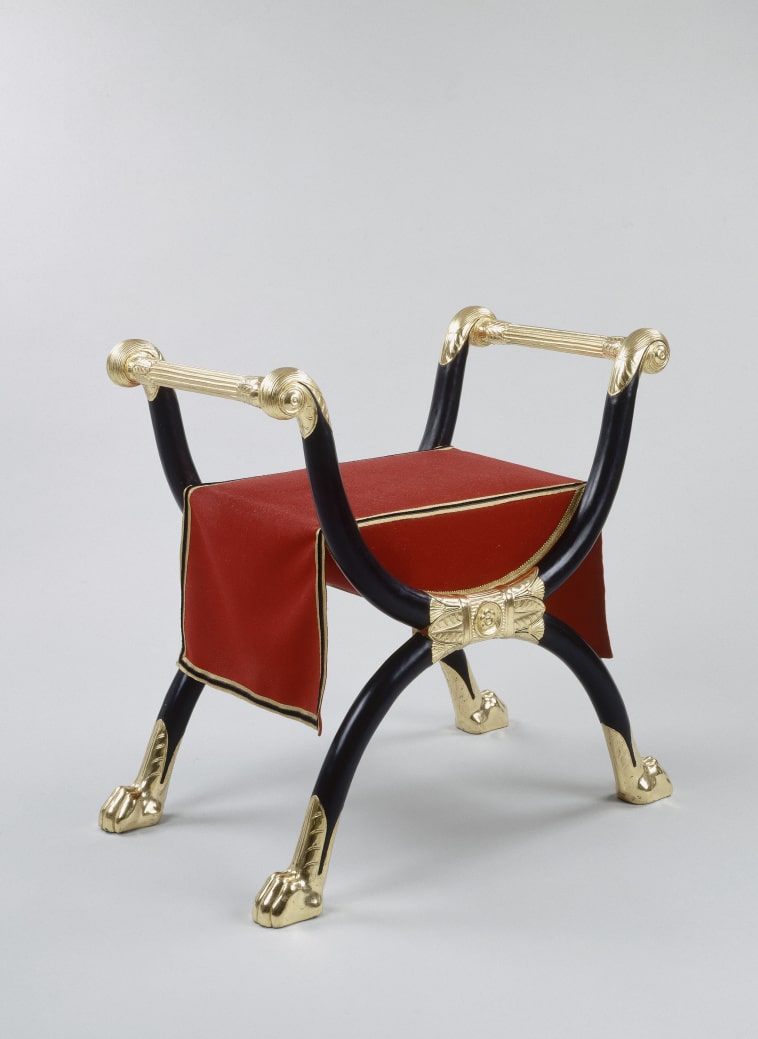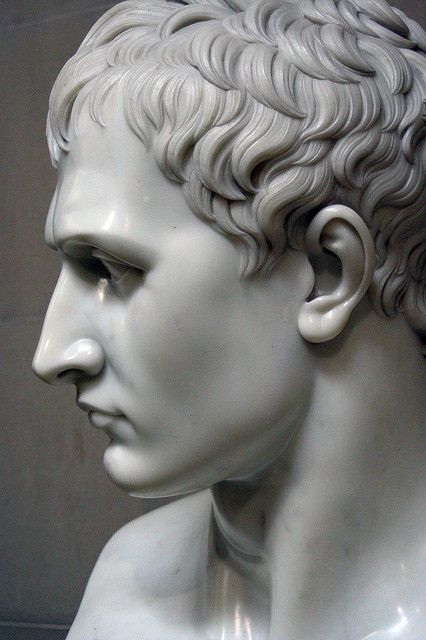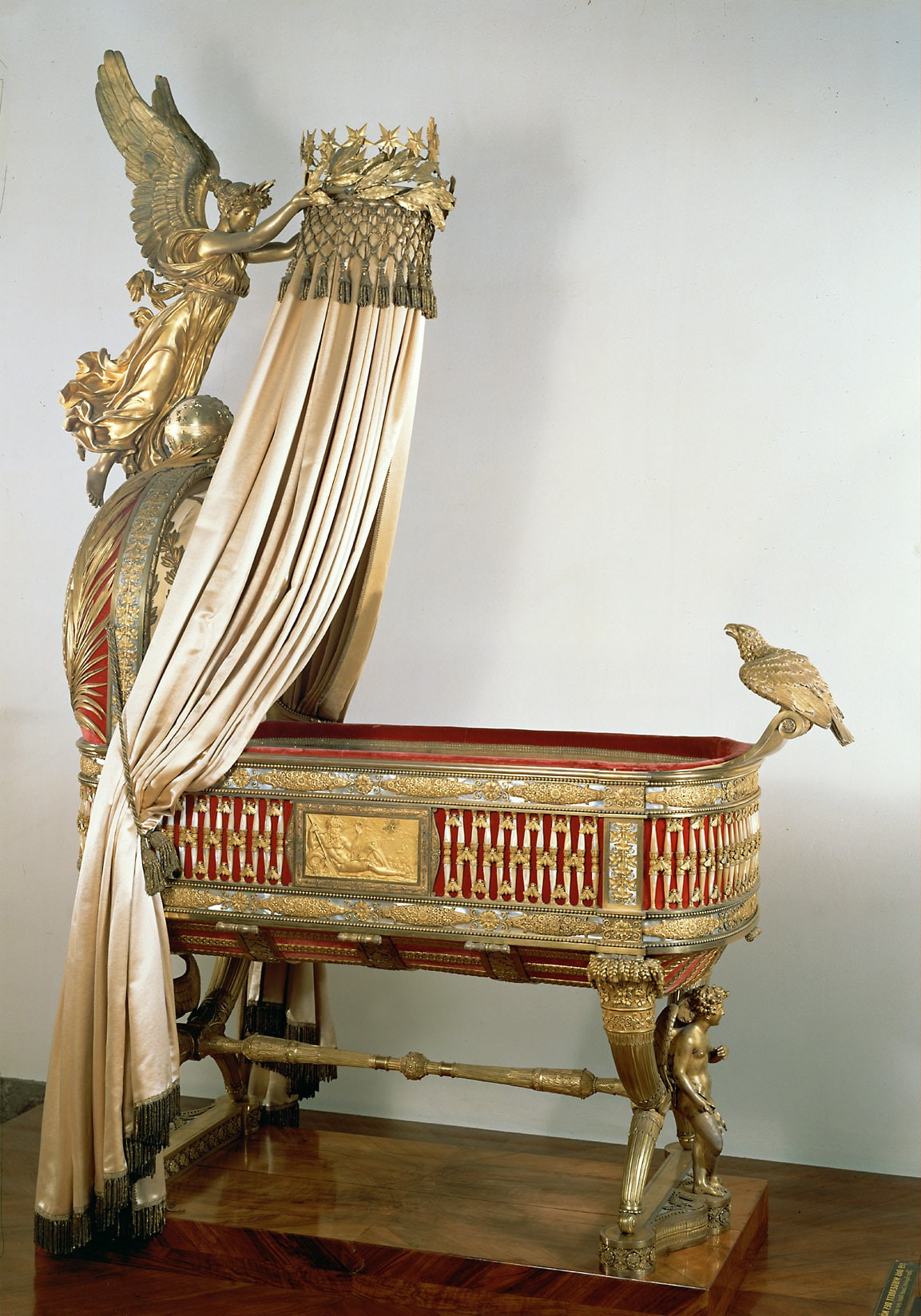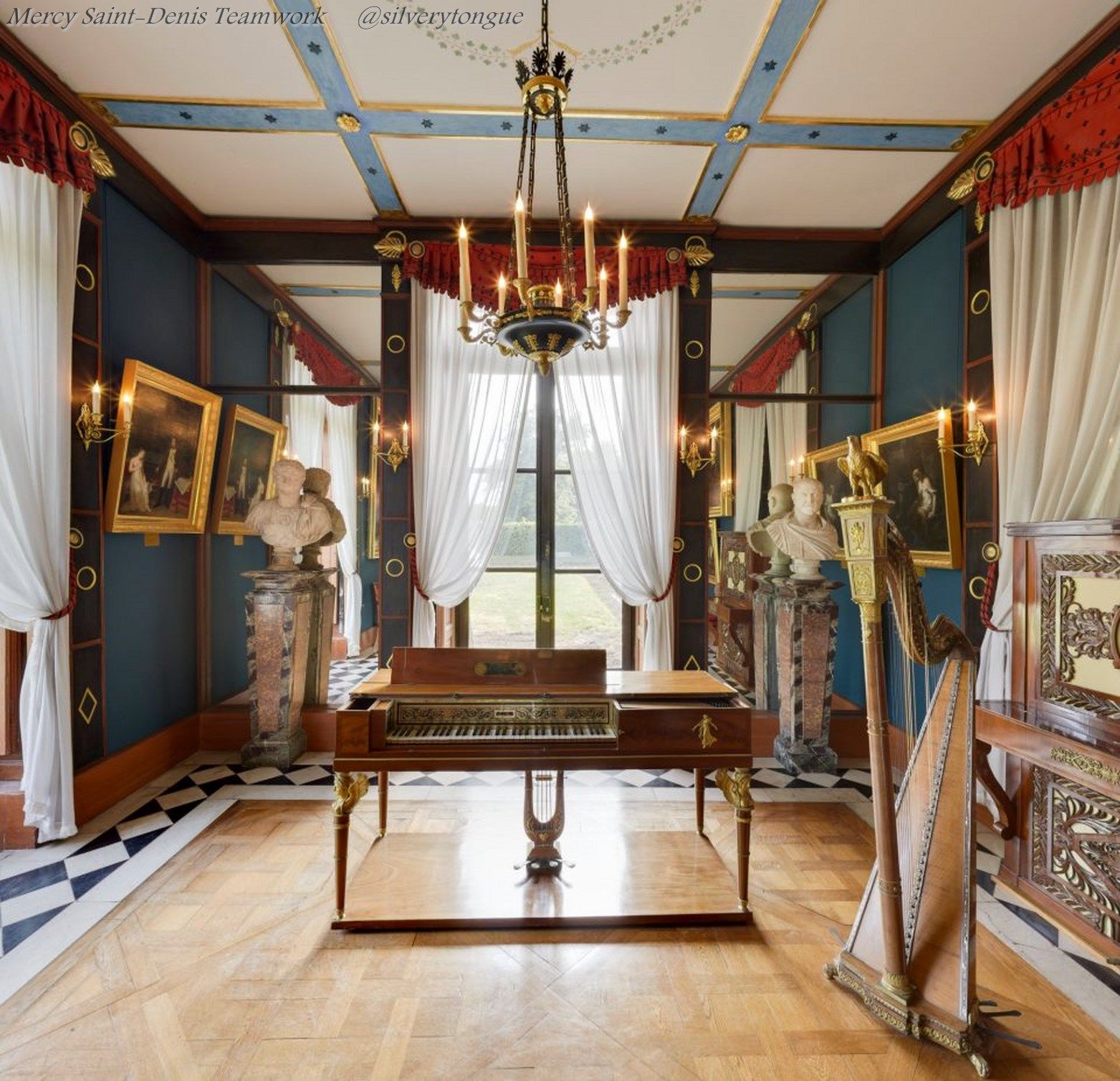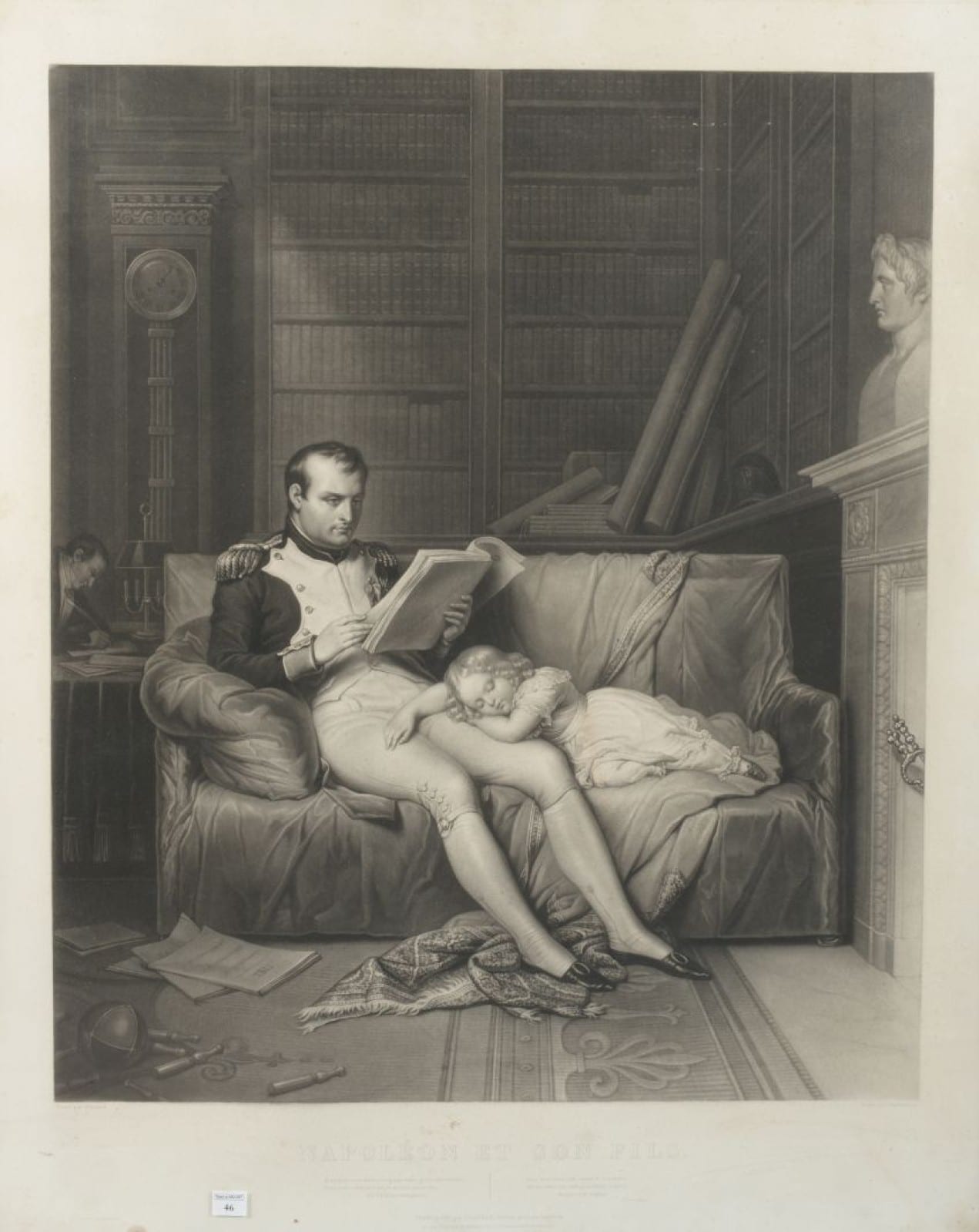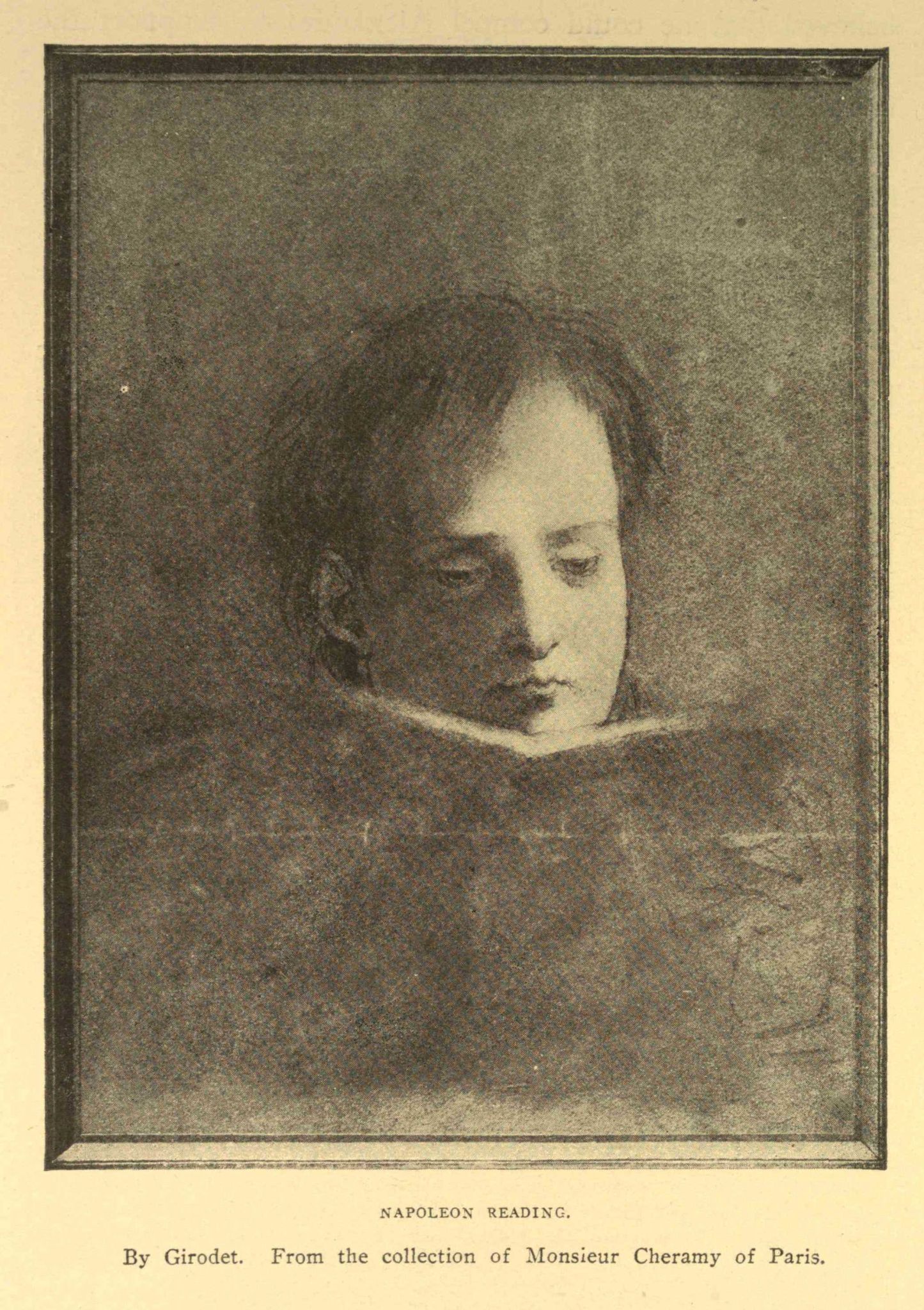What were we drinking at Napoleon's table?
After giving pride of place to gastronomy under the Empire and Napoleon Bonaparte's favorite dishes, let's take a look at what we drank at his table. Unsurprisingly, wine lovers will surely prefer Joséphine's eclectic and exotic tastes to Napoleonic frugality!
What was Napoleon Bonaparte drinking? We know that he is little concerned with good food and more sensitive to the simplicity of family or military gastronomy. If the man was no more fond of wine than of refined dishes, he nevertheless had his preferences. As for the guests at his table, they had no fear of dying of thirst: the Malmaison cellar concealed treasures carefully selected by Joséphine de Beauharnais.
Napoleon Bonaparte, a reasonable drinker
As a man of habit, Bonaparte almost always eats the same thing and drinks the same Burgundy wine every day, this Chambertin which he cuts with ice water. Constant (1778 – 1845), Napoleon’s valet from 1800 to 1814 reported this habit:
The Emperor drank only Chambertin and rarely pure.
The fact is confirmed by Mademoiselle Avrillion (1774 – 1853), Joséphine’s first maid. The ideal mixture of wine and water balances out half of one and half of the other. At the rate of a 50cl bottle for lunch and dinner, the bottles had to be kept ready in all the places frequented by Bonaparte. The habit began as soon as he was general since it was necessary to take cases of this Burgundy to Egypt. If the campaign was victorious for the future First Consul, it was disastrous for his bottles which hardly withstood temperature changes. Back then, sulfur was not a part of regular wine production, and unfortunately its absence often turned wine into vinegar.
Under usual conditions, however, we were already beginning to age the nectar using opaque glass bottles whose cork stoppering more securely preserved the integrity of the beverage. Usually, we served Napoleon Bonaparte and then Napoleon I – both maintaining perfect linearity in their habits – a 5 or 6 year old Chambertin which was supplied by the Maison Soupé et Pierrugues located at 338, rue Saint-Honoré in Paris. The merchants’ mission was to provide all the imperial residences and “on the battlefields, the sons of these gentlemen took turns following the Emperor”, testifies the valet Constant. The art of the table adopting the Russian service and abandoning the French one, the attention to the bottles was very different from the previous century and the wine was put in glass bottles manufactured in Sèvres and marked with the crowned N.
I cannot live without champagne, in case of victory I deserve it, in case of defeat I need it.
We lend this quote to Napoleon Bonaparte. And no doubt he said it. His taste for frugality is well established and champagne is one of the rare gastronomic pleasures that he truly appreciates. Proof of this is in the archives of the Moët house which keeps the accounting records of the orders placed by the famous Corsican. The very first is in the name of Napoleon Bonaparte, First Consul of Paris on the date of 27 Thermidor year 9 (August 15, 1801, the birthday of his 32 years!) then another passed in 1803. Once Bonaparte became Napoleon I, the orders were sent to the Emperor and his family. A few months before the Battle of Austerlitz, at the beginning of September 1805, an order from the Emperor was sent to Strasbourg and undoubtedly it was preparing without knowing it to celebrate a great moment in history. Joséphine and Jérôme Bonaparte also meet in the accounting records of the famous champagne house.
At the head of the latter, Jean-Rémy Moët, then mayor of Épernay, does not seem to have met the Emperor who came to his city only attracted by the fine bubbles. Napoleon I would have sympathized with this man who welcomed him to his home and who received, from the Emperor’s hand, the Legion of Honor.
Joséphine and the cellar of wonders of Malmaison
The inventory of Joséphine de Beauharnais’ cellar in 1814 reveals the extent of the refined taste of the owner of the Malmaison. More than 13,000 bottles are listed on the death of the former empress with prominently many sweet wines from vineyards ranging from Andalusia to Portugal, passing through the coasts of Languedoc, the islands of Madeira and the Canaries. These wines, appreciated for their sweetness, were served during afternoon snacks or for dessert at the many receptions and meals organized by Joséphine.
A major meeting place for the elite and those close to the imperial family, the reputation of the Malmaison table has stood the test of time. It is undoubtedly a must in the history of French gastronomy and tableware. Joséphine de Beauharnais, expertly advised by the best palates of the Empire (Cambacérès and Talleyrand in the first place), shone with a daring choice of prestigious wines and exotic alcohols, a memory of her native Martinique.
Bordeaux and Burgundy wines, champagnes, Côtes du Rhône and Rhin, Muscats from Lunel and Roussillon, vermouth, Italian and island liqueurs were regularly served at the table. Especially rum was a Creole eccentricity that delighted guests, especially when it was served as a punch, a drink already fashionable in the 18th century but which became essential under the Empire. Joséphine loved it, having it scrupulously prepared with the five essential ingredients then: tea, sugar, cinnamon, lemon and rum. Reason why the punch bowl was part of the… tea sets!
To please the ladies, the punch was served frozen. Some say that it is in Procope restaurant that it was drunk thus first because this very fresh punch attenuated the taste of alcohol and thus pleased more ladies. The story does not say if Josephine drank it like this at bedtime.
Because if the Empress was not a big consumer of alcoholic drink, she often drank, before sleeping, a small glass of punch. No wonder, because this beverage was credited with ensuring a smooth and peaceful sleep. There was nothing incongruous about the presence of a punch bowl in a bedroom at the start of the 19th century. Remember that those days are over, this is no longer the case today and that it would be the worst taste to replace your blanket with a bottle of rum, even if it was embellished with sugar and spices.
When Bonaparte was exiled to Saint Helena in 1815, his daily life was naturally upset. His Chambertin could not stand the trip and the English served him a claret that the fallen Emperor did not appreciate. Sometimes we see him working out a few negotiations to exchange a few bottles for Burgundy, without success.
A wine from the Constancia vineyard, the Grand Constance, which is still known today as “Napoleon’s wine” is brought from Cape Town for him. In 2016, a bottle of Grand Constance dated 1821 and intended for Bonaparte was sold for € 1,550. A fragile memory of the daily life of the last days of the Emperor.
The Bicentenary of the death of Napoleon Bonaparte
The bicentenary year of the death of Napoleon Bonaparte has not yet been inaugurated as the controversy is already raging. What do we reproach the Emperor Napoleon I? Between black and golden legend, Bonaparte is a complex character, a historical object that it would be wrong to judge in the light of the present.
Are we aware of the influence Napoleon exerted on french lives on a daily basis? The Civil Code is undoubtedly the most immediate example, but the baccalaureate, the Legion of Honor and the Louvre as we know it today are Napoleonic works. The glory that this famous French figure – during his lifetime – on a world scale was so great that we still find it difficult to imagine it. It is undoubtedly this glory which is worth moreover to Napoleon so many criticisms: close enough to us and documented so that we can dare the comparison with our contemporary time but sufficiently distant so that it is tempting not to see anything other than the aura of the man who created his own myth. Napoleon Bonaparte did not have the glorious comforts of ancient heroes.
Napoleon Bonaparte and the restoration of slavery
The rise of Bonaparte is not the work of a single man. Neither did his rise to power. The coup d’état of 18 Brumaire Year VIII (November, 9th 1799) drew on the finances of businessmen as well-off as they were worried about the country’s political instability. Their support does not know philanthropy and naturally implies that they gain a voice in the decisions that will be taken subsequently. Once Napoleon Bonaparte appointed First Consul (20 Brumaire), requests for the reestablishment of slavery abolished in 1794 in the French colonies became regular and insistent. Until 1802, Bonaparte did not give in:
We must not take freedom from the men to whom we have given it.
Alas, he will end up going back on his words. Following the peace of Amiens in March 1802, France recovers its colonies of Martinique, Tobago and Saint Lucia. However, the abolitionist law of 1794 had not been applied either in Reunion – which had hampered its application – or in Martinique where a royalist insurrection had led to an agreement of submission to the English royalty before the latter conquered the island. .
The law of May 20th, 1802 concerns the territories which had not applied the abolitionist law of 1794. Thus, the territories recovered during the peace of Amiens were in theory not concerned by this law. Nevertheless, slavery was reestablished in Guadeloupe by a decree of July 16th, 1802 – the original of which, discovered in 2007 at the French National Archives, was presented on the occasion of an exhibition commemorating the bicentenary of the death of Napoleon I in 2021. The presentation of this document to the public for the first time is an important position taken to refine an often distorted or poorly understood dimension of Bonaparte’s reign and its consequences on human rights throughout the 19th century. In Guyana, slavery was reestablished in April 1803. General François-Dominique Toussaint Louverture (1743 – 1803), will participate in the independence of part of Santo Domingo which will become Haiti on January 1st, 1804.
The massacres perpetrated by French troops on black insurgents in Guadeloupe and Martinique to regain control are among the bloodiest acts of Bonaparte’s reign. Let us add that the abolition of slavery in France will have to wait until 1848 before being final. The beginnings of the reign of the future emperor thus make France the only country to have re-established slavery. A French cultural exception whose history would have gone well.
Napoleon Bonaparte, the misogynist?
The Ancien Régime aristocracy – the highest in particular – stood out in the 18th century as one of the few circles in which misogyny had little or no influence. The revolutionaries held it against them and the accusations wept. The reproaches were all found and the aristocrats to have effeminated, to have become weak as one imagined then the natural inclination of the women. Revolution in opposition to the Ancien Régime therefore wanted to be virile. Bonaparte, like all the men of his time, had no other idea of the masculine ideal: solid, strong and determined, adjectives deliberately removed from the feminine sphere too superficial and fragile to interfere with serious subjects. The exuberances of Les Merveilleuses at the end of the 18th century sound the death knell for a feminine presence accepted and admired outside the domestic space, a last jolt before a 19th century of feminism that appalling in the eyes of our young 21st century.
Once the Directory and even more the Empire were established, the nineteenth century pushed revolutionary virility further by drawing fairly firmly into male and female genders which, even at the beginning of the twentieth century, we had all the trouble in the world to get rid of.
The Civil Code, a famous work of the Napoleonic reign, then stands out in our eyes as the assumed and satisfied contemptor with the condition of women and contemporary opprobrium. And for good reason, the text does not have a feminist soul. Yet it would be perfectly anachronistic to imagine that the man of the beginning of the 19th century allowed Bonaparte to impose an idea of woman. Misogyny is neither pervasive nor new.
If a few very rare feminists made their voices heard during the French Revolution, it is perfectly unthinkable to imagine giving a woman the responsibilities of a politician. In this sense, Napoleon Bonaparte is no more misogynistic than his male contemporaries (but is undoubtedly more so than his female contemporaries). In drawing up the Civil Code, Bonaparte kept in mind his primary concern: to protect the family unit, the model of which was necessarily patriarchal. A delicious irony when you know the central and authoritarian place of Letizia (1750 – 1836) in the clan of the famous Corsican.
Man must therefore be at the center of the family, he is its central pillar. He is required to be respected and to protect women and children. The failings of the head of the family are legally reprehensible, but those of women are even more so. The Civil Code confines the woman in the place of a minor individual placed under the tutelage of her husband: “The husband owes protection to his wife, the woman obedience to her husband. The woman is considered “weak and dependent”, like a child. This is why the rights of women, if they are considered sacred, cannot be entrusted to her because her very nature does not allow a woman to exercise them reasonably. Jacques de Maleville (1741-1824), one of the drafters of the Civil Code, likes to remind women of the “feeling of their inferiority” and “the submission they owe to the man who will become the arbiter of their destiny. However, sad reassurance, a man cannot divorce a woman over the age of 45. A precaution that stems from the duties of the husband who are required to ensure the protection of his wife. There is no question therefore of abandoning the latter if by chance the desire took you to find the titillating sensations of youth.
Once again, let us note the irony which forces Napoleon I to circumvent his own law to marry Marie-Louise of Austria (1791 – 1847). The protection of children is also a concern which is important to Bonaparte and we have always inherited many of its provisions today.
For a man who judged the break-up of the family unit as a disorder harmful to the good running of society, his private life was the perfect counterexample, a total fiasco which is surprising and which reveals a large part of the ambivalence of the Napoleonic myth.
Married to a widow mother of two, he finally manages to divorce while Joséphine is 46 years old. His second wife Marie-Louise gave him a son who barely knew his father and who was left with terrible loneliness until his death at the age of 21. Two other children of Napoleon will live without ever being recognized by their father, then Bonaparte will die in Saint Helena, alone and without any member of his family by his side. The break-up of the family unit he feared so much could not be more complete.
So the Civil Code is, without doubt, severe with the female condition; but it is not an ideology personal to Napoleon Bonaparte. Because the fall of the Emperor does not announce improvements for women whose lower status is maintained under the Restoration.
Of course, some female voices contemporary with the Napoleonic work speak out against such considerations, but they are rare and require a certain social status to be heard. The rare women journalists, those “blue stocking” that men despise, try to make themselves heard in a journalistic and literary world entirely in the hands of men. The task is difficult and painful to say the least. Only the figure full of panache and the dazzling fame of Madame de Staël (1766 – 1817) is offended openly about what is inflicted on women. Her character and intelligence dissuaded even Napoleon from replying, he who said of her:
I have four enemies, Prussia, Russia, England and Madame de Staël.
May 5th, 2021 inaugurates the bicentenary of the death of Napoleon Bonaparte, who died in Saint Helena on May 5th, 1821. If criticism is raised everywhere as to the celebration or not of the death of this character and the commemoration of his influence in the history of France, divisive opinions still carry the debate to the confines of an absurdity which sometimes comes under artistic performance.
To commemorate does not mean blindly praising or shooting on sight. The virtue of the debates between historians and specialists in Napoleonic history with argued, documented and posed speeches are undoubtedly the best answers to bring in this year of commemoration. Everyone should be able to form an informed opinion on the historical reality of Napoleon Bonaparte, his reign and his influence still today in our lives. The numerous debates, works and exhibitions planned for this occasion will be the occasion, we hope, to initiate a true reflection on this character whose myth sometimes crushes the necessary nuance.
The Napoleonic soldiers: a badly shod army
"Speed, speed, speed". These words of Napoleon Bonaparte could succinctly summarize the essence of his strategic genius. The Napoleonic army moved twice as fast as its adversaries. An asset as much as a feat, both supported by an accessory showing itself (almost) always failing: the soldiers' shoes.
Doubtless no campaign was exhausting like the Napoleonic campaigns. That a good physical condition is essential to make a good soldier, no one will doubt it, but more than for any other, the conscripts of the Napoleonic wars had to have an iron health. Probably, no one imagined the harshness and endurance required that soldiers would have to display to face the forced marches on often bad and chaotic terrain.
Conscription then concerned young people aged 20 to 25, in good health naturally. Drawn by lot, the conscripts designated by Fortune – whose good intentions can legitimately be questioned – had to be trained quickly to integrate regiments made up of young and old experienced soldiers. At the cost of intensive and severe military training, it took three months of service to make a recruit into an effective infantryman. However, the very first teaching provided often consisted in differentiating his right foot from his left foot, a rudimentary exercise but essential for the good soldier to walk correctly in step. For these young people, mostly uneducated and more versed in the art of working the land than moving around it in an orderly and synchronous manner, the instructors found a trick that put at the center of the future soldier’s life an accessory that would focus their attention steadily until they return, perhaps one day, to civilian life: the shoes. In the left shoe (or the hoof for those who were not yet perfectly equipped) we placed straw while the right shoe was stuffed with hay. Thus, the soldier went at a walk without being mistaken at the chanted cry of his superior “Straw – Hay!” Straw – Hay! “. The attested anecdote has something to smile about if the problem of shoes in the Napoleonic armies had not become a permanent concern for the General Staff.
The Napoleonic marches
The Napoleonic campaigns to be dazzling must be led by enduring soldiers, without injury and therefore well equipped. Because the steps are terribly long. Linking one city to another, one battlefield to another, often involves traveling tens of kilometers a day in a very short time at a sustained pace. The feat of the troops of General Friant (1758 – 1829) compelled admiration in this sense when his troops rallied the battlefield of Austerlitz by covering more than one hundred kilometers in 44 hours. On average, the troops traveled 50 kilometers daily in often difficult conditions (terrain, climate). We therefore understand the capital importance for soldiers to be well shod.
The shoes distributed by the Army were made of turned cowhide and weighed 611 grams (only, one might add). They were of three sizes ranging from small (between 20 and 23 cm) to large (over 27 cm) through a medium size (between 23 and 27 cm). The last sole was in tanned cowhide leather then reinforced with shoemaker’s nails: there were between 36 and 40 depending on the size. The soldier tied them firmly with a leather lace passing through two holes without eyelets; wear was to come to an end very quickly. Like almost all shoes from this era, the toe was square. A peculiarity all the same specific to the military shoe: there was neither right nor left foot. The two perfectly identical shoes were shaped by the foot of their wearer according to the grueling steps he took. Thus, each new recruit was given a uniform, a weapon and of course a pair of shoes normally designed to travel a thousand kilometers.
But the latter were worn out so quickly that numerous testimonies report that at the end of the fighting, the soldiers hastened to remove the shoes of the dead when they did not make their own shoes with the means at hand. During the Spanish Civil War, spare shoes did not arrive, the soldiers became shoemakers in addition to their usual duties. In his Briefs , David Victor Belly de Bussy (1768 – 1848) reports that men made boots for themselves by rolling cowhide around each leg and foot, taking care to leave the animal’s hair out.
Thus, despite the importance that Napoleon Bonaparte always attached to the good equipment of his troops, the stewardship took under the Empire such an extent that the financiers struggling to win military contracts had no qualms about providing poor quality equipment. for the bulk of the troops. Not to mention the problems associated with supplies, soldiers’ shoes were a constant concern and a recurring subject in Napoleon’s correspondence.
The unscrupulous suppliers of the Napoleonic army
The contracts signed with the army were juicy for those who had the means to pay the advances and to come to an understanding in unofficial politics. Corruption and the friendships of a close circle of power were absolutely necessary for anyone aspiring to do business.
For the Italian campaign, it was the Coulon brothers, friends of Bourienne (1769 – 1834) who won the market for soldiers’ shoes, but their bankruptcy put an end to this contract. Before the Battle of Marengo, a treaty was signed with Étienne Perrier and his counterpart Louis Cerf, both shoemaker and bootmaker. These two Parisian artisans were responsible for supplying Hungarian-style shoes and boots to the Army corps. But it was undoubtedly Arman-Jean-François Seguin (1767 – 1835) who won the biggest contract. This chemist had succeeded in developing a rapid tanning process that required only three weeks instead of the traditional six months. Naturally, this innovation attracted the attention of the State, which granted Seguin the market for “all the tanned, wrought and honed leathers necessary for the footwear and the equipment of all the troops on foot and on horseback” for a duration of 9 years from year VI (1796).
These markets with insubstantial economic benefits were not, however, inspected as one might expect from a state order. The financiers therefore made a point of reducing the quality of the products in order to make more profit. The case of the cardboard shoes seems to start off as a joke, but it is not.
For the Russian campaign, the soldiers of the Grand Army were given faux leather shoes with cardboard soles. What would have been an annoyance in Spain turned into a frozen nightmare in Eastern Europe. Gabriel-Julien Ouvrard (1770 – 1846) one of the most important financiers of the time – a character that Bonaparte did not like but needed – was suspected of being at the origin of this dishonest and contemptuous delivery. It seems that no proof can yet formally attest to this.
Napoleon Bonaparte's boots
The soldiers were thus the worst shod. But the higher we rose in the military hierarchy, the more we favored the comfort of our feet (among other things). The highest ranks were gaiters and boots, although the quality was not always there. If necessary, the emoluments however made it possible to afford a pair made of good leather.
Napoleon I never distinguished himself on the battlefields or during the campaigns by an inappropriate luxury and naturally his taste went to simplicity. He always favored quality although he was often negligent. His shoemaker Jacques, installed rue Montmartre in Paris, said that Napoleon had the nasty habit of stoking the fire in the bivouacs with the tip of his boot, thus wearing out many pairs which, without this wicked treatment, would have lasted a long time. Bonaparte attached himself a model of high boots to the rider – supple boots with cuffs – in black morocco which he ordered in numerous copies. He wore a current size 40 and paid them 80 francs, which is 20 francs more than the famous black beaver hat (link). A tidy sum for the commoner, but almost too low for an Emperor whose taste for simple things must be recognized – at least.
Do you like this article?
Like Bonaparte, you do not want to be disturbed for no reason. Our newsletter will be discreet, while allowing you to discover stories and anecdotes sometimes little known to the general public.
Napoleon Bonaparte, Chess Player
A strategic game par excellence, an elegant symbol of the art of war, chess has been the king of games and the game of kings since the Middle Ages. Napoleon Bonaparte could not remain indifferent to it without, however, and it is surprising, never becoming a brilliant player!
Napoleon, a Bad Sport
If Napoleon Bonaparte often arouses blissful enthusiasm or blind hatred, no one seems to question his strategic genius. Of course, such a talent would seem to find in the peaceful and regular practice of the game of chess the exaltation of this remarkable strategic mind. However, it is not. Napoleon certainly learned the rules of chess when he was a pupil at Brienne; this game was indeed one of the many qualities that good society deemed necessary for a young man. While settling in Paris, the “petit lieutenant” comes to practice “pushing wood” at the Café de la Rotonde or at the very popular Café de la Régence, haunt of the best chess players since the middle of the Eighteenth century.
The revolutionary period, tasting little of the central role accorded to the King’s play, had kept chess in the shade for a few years, reworking its form without changing its substance so that the game espoused the republican cause. But the craze – never extinguished – for the traditional form soon returned and Napoleon was not indifferent to it. Until the young lieutenant had yet dazzled France with the meteoric Italian campaign, no one pay interest to its play on the chessboard. Nonetheless, had he shown the extent of his military genius on Italian soil, it was imagined that he was just as formidable leaning on a gaming table. He was not.
First, let us note that the conception of chess at the turn of the 18th century was very different from today. The strategic theory and the preparation of the attacks were almost nil and the direction of positioning hardly considered. One wanted to shine on the chessboard with the same brilliance as the final assault of a Homeric battle. The games were aggressive and the attacks started quickly without hesitating to sacrifice pieces and pawns for a spectacular checkmate. Nevertheless, circles of amateurs and champions gradually took shape, treaties multiplied and strategy developed. François-André Danican Philidor, nicknamed “the Great” (1726 – 1795), undoubtedly the best player of his time, was also the first to shake up the intuitive and imaginative vision of chess by writing one of the very first treatises on the game.
Probably Napoleon’s way of playing was borrowed from the old and the new manner. But where the future First Consul shone and knew how to use his talent, he lost his advantage on the chessboard. Indeed, on each side of the board, the opponents face the same field and are in possession of the same squad information. In this case, it was impossible for Bonaparte to take advantage of the natural terrain, impossible to bluff on the number of soldiers per contingent. On the chessboard, the two opponents are on equal ground; the strategy and the inventiveness to be deployed are not the same as in real war. Journalist and writer Jean-Claude Kauffmann sums up the game attributed to Napoleon:
The strategist of Austerlitz and Friedland who considered the battlefield a chessboard was a poor chess player. He naively rushed at the opponent and was easily captured, which did not prevent him from brazenly cheating.
Bonaparte was cheating. It’s a well-known fact and not just in chess! We know his impatient and sometimes (often?) difficult character, it is quite easy to imagine him as a bad player. Perhaps he would have been better – at chess anyway – if he had had the opportunity to study the game better. This great reader might not have had the opportunity to look at the treatises newly published. All his life he loved this game without being a top player.
In Egypt, he played with the Comptroller of Army Expenses Jean-Baptiste-Etienne Poussielgue (1764 – 1845) and with Amédée Jaubert (1779 – 1847), member of the Commission for Science and the Arts and translator. In Poland, it was with Murat (1767 – 1815), Bourrienne (1769 – 1834), Berthier (1753 – 1815) or the Duke of Bassano (1763 – 1839) that he played chess. Like a close friend, Bourrienne testifies with sincerity to Bonaparte’s game while Hugues-Bernard Maret, Duke of Bassano goes there with a touch of flattery:
Bonaparte also played chess, but very rarely, and this because he was only a third force and he did not like to be beaten at this game. He liked to play with me because, although a little stronger than him, I was not strong enough to win him always. As soon as a game was his he would quit the game to rest on his laurels.
Louis Antoine Fauvelet de Bourrienne, Mémoires
The Emperor did not skillfully start a game of chess. From the start, he often lost pieces and pawns, disadvantages his opponents dared not take advantage of. It wasn’t until the middle of the game that the right inspiration came. The melee of the pieces illuminated his intelligence, he saw beyond three to four moves and implemented beautiful and learned combinations.
Hugues-Bernard Maret, Duke of Bassano
Probably the Duke will have seen the Emperor’s game on a good day … Unless he was dazzled by the pomp more than the game! Because Napoleon Bonaparte was not the type, one would have suspected, to easily accept defeat. In addition, he was impatient, stamped his foot or drummed on the table when he judged his opponent too slow, which did not fail to disturb the arrangement of the pieces on the board … Whether his opponent was human or mechanical, his attitude was the same. A certainty acquired during this famous episode that we never tire of telling.
In July 1809 at Schönbrün Palace in Vienna, a historic chess game was about to take place. Setting up the chessboard and one of the two opponents is laborious; and for good reason: it is about installing an automaton. Imagined and manufactured by Baron Wolfgang von Kempelen (1734 – 1804), this mechanical “Turk” has already played games with some of the world’s greats, including Catherine the Great (1729 – 1796) or even Benjamin Franklin (1706 – 1790) while the automaton was at the Café de la Régence in Paris in 1783.
In 1809 however, the learned machine no longer belonged to the baron but to Johann Nepomuk Mälzel (1772 – 1838) but still aroused enthusiasm (as well as suspicion, a very natural feeling which would later be legitimized). Napoleon Bonaparte accepts the confrontation with the automaton. The game was chaotic because the automaton seemed perfectly capable of recognizing a cheater when it saw one! So the Turk would put a pawn or a piece in its place as soon as his opponent tried to cheat. A nasty twist that Bonaparte had no qualms about facing the machine. But, the annoyed automaton systematically swept the chessboard with his arm after three fraudulent attempts which, of course, did not fail to happen with the Emperor. The Mechanical Turk thus defeated Napoleon I by disqualification.
In 1834, the deception was exposed. The automaton was endowed with no mechanical intelligence. A set of mirrors and articulated arms allowed a small player to crawl under the automaton and the board and play brilliantly against all the prestigious opponents he faced. Either way, it must nevertheless be recognized that this (or these?) player, as anonymous as he was, was one of the best chess players of the time!
Napoleon at Saint Helena
In 1815, Napoleon Bonaparte was exiled to Saint Helena, an island as remote from Europe as the temper of the fallen Emperor. Bonaparte’s unrestrained and permanent activity contrasted with the imperturbability of this isolated rock, one may almost believe that by dint of work Napoleon would be able to make it move. Obviously, one tried to recreate a refined environment, however, the Empereur never fear the Spartan life. Days were often studious but almost every day Napoleon loved to play chess. The 19th-century grandiloquence of the gaming journal, La Palamède, reflects Napoleon’s still strong taste for the chessboard:
If the game of chess had not already attained a high nobility, it would be ennobled by giving a few moments of happy entertainment to the greatest of prisoners and exiles.
La Palamède, 1836
A poetic assertion quickly disheartened by Las Cases :
He was infinitely weak at chess.
It’s a safe bet that Napoleon did not win many games! Especially since Madame de Montholon, who attended many parties during the exile, added that:
Touch-move rule, but it was only for his opponent. For him [Napoleon] it was different and he always had a good reason why it didn’t matter, if anyone notices it, he would laugh.
At least the island air seemed to have softened his bad sport character (in chess at least)!
Upon his hasty departure from France, we know that a chess board was carried in the luggage. Nevertheless, Napoleon Bonaparte had at his disposal during his stay at least two Chinese chessboards, one of which was offered to him by… an Englishman.
On July 4, 1817, boxes from China destined for Bonaparte arrived at Saint Helena. In one, a beautiful chessboard and its ivory and cinnabar pieces was the gift to the Emperor from John Elphinstone. The man was then head of the Canton counter for the East India Company and with this elegant gift expressed his gratitude to Napoleon. The latter had indeed saved the life of Lord Elphinstone’s brother during the Belgian campaign in 1815 by demanding that this Scottish aristocrat seriously injured and taken prisoner be treated. The zealous gratitude expressed by the Lord pushed the detail so far as to stamp all the pieces of the game with the imperial monogram. A detail which flattered the emperor but which annoyed even more (because he was always on edge) his jailer Hudson Lowe who accepted reluctantly and after several days, to transmit his present to the illustrious French prisoner.
This gesture of Lord Elphinstone impressed Napoleon more than the game itself, the pieces of which were impressive. The tower in particular was a huge elephant which aroused Bonaparte’s amusement: « I should need a crane to move this tower! » (La Palamède, 1839).
Some pieces of the various chess games he owned were distributed to his companions in exile during the New Year’s Eve. It seems that Marshal Bertrand received a few in January 1817 without it being possible to say with certainty which game it was. Today a set and a few pieces are kept in French museums and in private hands, and sometimes pieces resurface from the past at auctions. Very tenuous memories of the life, character and faults of Napoleon Bonaparte, a fine strategist on the ground but an inveterate cheater on the chessboard!
Napoleonic Wars casualties
Enthusiastic or detractor, there are many who engage in a war of numbers to acclaim or denounce Bonaparte's military operations and their cost in terms of human lives. What is it really?
Although it is difficult to obtain an exact figure, many historical studies are today consensus and allow not only to better understand the Napoleonic history but also to place it in relation to other great wars which marked France and the European continent. We will also appreciate the quality of the long, patient and referenced work of emeritus historians in the face of the epileptic and vociferous agitation of Internet users who are too happy to be freed from any academic commitment to shout a story rewritten by their care, a story whose primary quality is to travel light; in fact, these individuals rarely encumber themselves with serious bibliographic sources. That being said, it’s okay (but not always, as everyone sees on a daily basis) to use the numbers with caution. Chateaubriand accused Napoleon of having killed more than five million French people in eleven years of reign. We know the literary value of Chateaubriand’s writings, we can no longer ignore after reading such an assertion the little importance he made of learning mathematics. Because indeed, figures can say anything and everything depending on whether or not the details are given. How did Chateaubriand arrive at this figure? Impossible to say. Was he a sharp critic of Bonaparte? Did he have any complaints against him? This is no longer to prove. Can we consider as fair and objective the figures put forward without argument by a man who resented the one he accused? Maybe not. This is why the work of historians is once again capital and essential to consider calmly and as objectively as possible such a burning subject.
The death toll attributed to Napoleon’s military deployments spanned fifteen years in several countries. To suspiciously attribute several million deaths to Bonaparte is often an assumed or even claimed approximation, peremptory affirmations are always more comfortable than the complicated meanders of nuance and study. Of course, it is not a question of being naive: the Napoleonic campaigns were not walks in the park and, over fifteen years, the human losses, whatever the camp which one chooses, are considerable. But are they more so than other conflicts before (the Thirty Years War) or after (the First World War)? The response of historians tends to be negative.
Calculating French losses: laborious work
Before considering the figures put forward by historians, let us recall that before the present day, human losses were not or little counted, leaving room for partisan assumptions that were often excessively high or excessively low. Jacques Houdaille (1924 – 2007) – teacher at several American universities and director of research at the National Institute of Demographic Studies (1970-1988) – used the army personnel registers to assess Land army losses under the First Empire. His studies of historical demography are today considered the most reliable by historians and scholars of Napoleonic history. From the start of his study, he drew attention to:
A confusion, difficult to avoid, between soldiers who died in combat and soldiers who died or disappeared under the Empire [which] allowed all the more fanciful assertions since, even for the losses of the French army, it was difficult to distinguish the French born in France, within its borders of 1815, Belgians, Italians, Rhenish and Dutch born in the annexed departments between 1792 and 1811.
This gives a little insight into the difficulty, knowledge and mastery of research protocols and historical tools as well as the patience required to undertake such a study. The figure put forward by Chateaubriand quickly appears inconsistent compared to those collected by researchers. Because if 2,432,335 French were called to military service from 1799 to 1815, two million were actually conscripted (Chateaubriand’s five million are largely excessive). For France alone and based on the work of Jacques Houdaille and those of other historians, we manage to establish a high (one million dead) and low (400,000 dead) range of human losses over the cited previous period; and if the estimate is still difficult, as Thierry Lentz, the director of the Fondation Napoléon, rightly points out, it can reasonably be argued that the average range – or around 700,000 French deaths – is the closest to the truth.
European losses and losses during the great battles
This fifteen years of history obviously did not affect only the French. The European toll is also high and the average estimate tends around more or less two million dead, including the human losses of Russia (500,000 men), Prussia and Austria (500,000 men), the Poles and Italians (200,000 men), the Spaniards and Portuguese (700,000 men) and the British (300,000 men). *
The reports are further refined thanks to the patient studies of the battles led by Danielle and Bernard Quintin ** using the method of Jacques Houdaille. Thus for the Battle of Austerlitz (December 1805), there were 1,538 dead in the French camp for 72,500 combatants, or 2.12% of the troops. In Eylau (February 1807) 2711 died and 44 presumed dead, i.e. a 5% loss, and at Friedland (June 1807) 1,849 men were killed, 68 presumed dead and 341 missing.
Of course, the loss of life is colossal and always too high, whatever the conflict. But are they more so than other wars that have ravaged Europe? Obviously no.
The Thirty Years’ War (1618 – 1648) caused nearly two million deaths among combatants and even more among civilians. There are at least five million victims for a total population of fifteen to twenty million inhabitants in the Holy Roman Empire. The First World War caused 18.6 million deaths in four years, including soldiers and civilians. Some will be offended to see us compare conflicts and their losses with regard to the demographics of each era or to the weapon technologies employed. But in this case, how do you support the idea that Napoleon Bonaparte was a power-thirsty with no regard for the lives of his soldiers? An assertion works against a referent, and in either case (in comparison or without comparison) the argument does not hold. Judging Bonaparte’s action against what our time considers the right way to act as head of the army is also unreasonable. The beginning of the 19th century is a far cry from our post WWII era. However, let us insist on this point: Napoleon Bonaparte is not a holy personage or an incarnate demon. He was an ambivalent, opportunistic and ambitious personality in a time of turmoil. Let us also remember that the Napoleonic wars are largely (not all, we insist: in large part) the continuation of the wars of the French Revolution which then responded to the attacks of the united European monarchies.
Napoleon Bonaparte cannot be credited with the invention of war nor with the complete loss of life in the conflicts of the first fifteen years of the 19th century. Although an emeritus strategist, he was recognized during his lifetime – and testimonies abounded in this direction after his death – as a man close to his soldiers, the latter appreciated and recognized his experience in the field. A quality that many military leaders will not have during the First World War, a hundred years later.
As often, this historical figure crystallizes blind partisanship or stubborn hatred, the two having in common being simplistic. As History is nuanced, so are the characters who make it up. Only the work of historians can scientifically shed light on the areas of our history; to better understand it, we must rid it of its preconceived ideas and accept to question our certainties in the light of the most serious and recent research.
Do you like this article?
Like Bonaparte, you do not want to be disturbed for no reason. Our newsletter will be discreet, while allowing you to discover stories and anecdotes sometimes little known to the general public.
*Chiffres issus de l’étude de Alexander Mikaberidze, avocat et historien considéré comme un des meilleurs spécialistes étrangers du Premier Empire.
**Auteurs d’ouvrages de fond sur le Premier Empire, ils reçurent en 2007 le Prix spécial du Jury de la Fondation Napoléon pour l’ensemble de leur œuvre.
Joseph Bonaparte in America
First of the Bonaparte siblings, Joseph (1768 - 1844) was also the closest to Napoleon. The eldest of the family had a taste for the arts more than for power, and it is undoubtedly for this quality that the United States gave him the best years of his life.
The Departure
Joseph Bonaparte did not have time to take advantage of his privilege as a big brother for long. The young Napoleon, born a year after him, would turn upside down his life and that of his family. Although these two were bound together all their lives by a deep brotherly love, the younger often bullied his elder. The latter always tolerated wickedness with a patience that should command respect. The two were a pair, however, one climbing the ladder of power while the other remaining in the shadows amassed fortune and distinction, serving his brother’s ambition more out of loyalty than taste. Although he certainly had a taste for diplomacy, a quality one would imagine to be necessary when it came to living and working in the circle closest to Napoleon. Joseph, who was determined not to anger anyone, certainly had every opportunity to perfect this art during the reign of his brother. In turn, he was ambassador, senator, king of Naples, then leaving Italy for Madrid, he became king of Spain, general lieutenant of the kingdom in 1814 and finally president of the Council of Ministers during the Hundred Days. The fall of Napoleon was not, however, quite his. With his voluntary exile in America, Joseph was going to begin the best years of his life, more than twenty years of daily savoring what he liked the most, reading, receiving and living comfortably surrounded by art and friendly people.
Overnight between July 24 to 25, Joseph left the French coast, leaving behind his brother, whom he would never see again. He embarked for New York on a discreet brig with his aide-de-camp, his cook and his interpreter James Carret who left to posterity some notes on their Atlantic crossing, notes which set the tone for the comfortable future that will be offered to Joseph in the New World. The trip was pleasant and punctuated, according to James Caret, with the poetic enthusiasm of Joseph, who brilliantly recited French as well as Italian poetry, declaiming entire passages from Tasse, Racine or Corneille without any oversight. Joseph’s memory seemed to be as powerful as his voice, certainly intoxicated by the vastness of the ocean, chanted as if he wanted to be heard from both the old and the new continent.
Arrival in New-York
He first set foot in America on August 20, 1815. Newly arrived in New York, Joseph’s new life, to be pleasant, had to be discreet. The fall of the Emperor and his exile had ushered in a new era in Europe, and times did not spare Bonaparte’s former relatives and supporters. Joseph was perfectly aware that he had to keep a low profile and adopted for his peace of mind the name of Comte de Survilliers. The title was not usurped as it was that of a small property that Joseph owned near Mortefontaine, his French beloved estate. Throughout his stay, even after he was discovered as the brother of the fallen Emperor, he retained this name by which he always presented himself in America.
In New York, he introduced himself to Mayor Jacob Radcliffe, who urged him to come to Washington and make known his kind regards to President James Madison (1751 – 1836). For Joseph in fact had no political inclinations in America, quite the contrary! But as was to be expected, the reception was reserved. On his way to Washington, a messenger came to meet the elder Bonaparte informing him that the president could not receive but that he wanted to assure Joseph that he could remain in the United States as long as he pleased if he remained discreet. It was obvious to Joseph and even rather a wish than a condition. So he turned back to where he came from.
Some time later he left New York (where he was unwillingly recognized as the former King of Spain) and found a home in Philadelphia, at the corner of Second and Markets Street.
This residence hosted Bonapartist refugees as well as other passing French throughout the stay of the former King of Naples. But one never maked waves, visitors always prefered finding in Joseph’s home the comfort of speaking French language as finding the customs and traditions that made French culture. For Napoleon’s brother, the residence was ideally located about fifty kilometers from the land he had just acquired in Bordentown (New Jersey) and which he was busy developing. The house would soon become a benchmark of good taste and French art de vivre because Point Breeze estate, owned by the Count of Survilliers, was for Joseph the work in which he invested much of his fortune but even more himself.
Conveniently located along the Delaware River, in a beautiful landscape, Point Breeze estate required four years of development during which Joseph spared no effort. Supervising the work himself, it was not uncommon for him to show up dusty and in mud-covered clothes, far away from the distinction befitting the duties he had once held. The park was cleaned, fitted out with walks, gardens and flowerbeds. Inside, paintings, bronzes, marble busts, statues and tapestries amazed visitors who were astonished to discover the rooms and lounges, one more elegant than the other. Frances Wright, an English visitor, gave a precise description of reception rooms in the house. Each was furnished with superb mahogany pieces in the finest French style that we now call Consulate and Empire (link). The billiard room was probably the one that Joseph liked most because he spent a lot of time there with his guests. Adorned with white curtains edged in green, the carpets on the floor were white and a very beautiful red. On the walls we admired paintings by Rubens and Vernet, the palettes of which were not to clash with the colors of the room.
Adjacent to the billiard room, the Great Hall was the privileged place for large receptions. The most beautiful pieces of furniture were there, the walls hung with the same blue fabric that covered the armchairs and benches. In the center of this sumptuous room, two spectacular tables with marble tops – gray for one and black for the other – presented a superb collection of bronzes. It seems that a white marble fireplace donated by Cardinal Fesch (1763 – 1839) was also installed in this elegant room. On the floor was a Goblin rug so large that it covered almost the entire surface of the room. And everywhere masterpieces, objects and works of art of the highest quality adorned walls and furniture with a taste that made a visitor tell out loud what many were secretly thinking, namely that Point Breeze was arguably the most beautiful estate of America.
Patron of the Arts
Joseph won unanimous support everywhere. This refined man charmed with his wit, his discretion and his liberality. Certainly because our Bonaparte never failed to open the doors of his home to passing visitors, to curious people, to neighbors and even to artists eager to admire or copy the superb masterpieces which made all the salt of Point Breeze. His desire to promote French and European art through his collection did not stop there. Anxious to show to many people as possible the paintings of the most famous masters in his collection, between 1822 and 1829 he loaned several paintings to the annual exhibition of the Academy of Fine Arts in Pennsylvania. His Bonaparte crossing the Grand Saint Bernard signed by the hand of the famous Jacques-Louis David (1748 – 1825) was presented each year and it was considered by the painter himself as “a great honor”. But Joseph Bonaparte, as a great connoisseur and patron that he was, knew the importance of not underestimating the unknown artists who would perhaps make the famous names of tomorrow. Thus, he welcomed painters artists, both professional and amateur, but one anecdote conveys better than words Joseph’s still keen interest in art rather than ostentation. One day when the young apprentice George Robert Bonfield (1805 – 1898) was sent to Point Breeze for some job, the young man took advantage of a few stolen moments to copy down into a small notebook – which he kept near him – details of a Shipwreck of Claude-Joseph Vernet (1714 – 1789). Joseph passing by surprised the apprentice who had great difficulty in hiding his drawing in time; Joseph then asked to see the notebook and George sheepishly handed it to him. He later rejoiced at this awkwardness because Bonaparte, impressed by the young man’s talent, allowed and encouraged him to draw whatever he wanted in the house! Bonfield made a career and later became an important cultural figure in Pennsylvania.
You have to imagine what the possibility of drawing and reproducing the masterpieces from the Point Breeze collection meant for our young painter. Because if David’s painting was certainly one of the most spectacular, one could also admire works by the hand of Correggio (1489 – 1534), Titian (1490 – 1576), Pierre Paul Rubens (1577 – 1640) or Antoine van Dyck (1599 -1641), of Vernet and David Teniers the Younger (1610 – 1690) as well as Paulus Potter (1625 – 1654), Charles-Joseph Natoire (1700 – 1770), Jean-Baptiste Wicar (1762 – 1834) or François Gérard (1770 – 1837). Without counting the tapestries of the Gobelins, the bronzes and sculptors of the greatest names such as Antonio Canova (1757 – 1822) whose Joseph possessed a bust of Madame Mère (Letizia Bonaparte), a bust of Pauline Borghese and one of Napoleon, of which several visitors admitted that at first glance it was difficult to say whether it was a bust of the Emperor or of his brother as the resemblance between the two was striking!
Point Breeze therefore appeared, in fact, as an emblem of French taste in general but more broadly as the refined taste of the Old Continent, bearing the memory of the former lives of Napoleon’s elder brother whose artworks, it must be said, were not always added to his personal collection in a very legitimate way… But times were different and so were mentalities!
In America, he was not held against him and we constantly marveled at his collection and his library (then the largest in the United States since that of Congress had only 6,500 volumes while that of Joseph had more than 8,000 !) as well as on jewels and gems whose provenance was still questionable… Whatever! We weren’t going to take offense at this affable and courteous man who gave work to all (it was said that in Bordentown there were no poor as long as Joseph Bonaparte lived there). Every Sunday, the doors of the residence were opened wider and opened the vast park along the Delaware River to residents of the neighborhood who did not deny themselves their pleasure! The delights of the gardens in summer were matched only by the frozen lake in winter. In what is now known as Bonaparte’s Pond, one skated happily on the thick ice while Joseph rolled apples on it, which the skaters enthusiastically chased.
The inhabitants held the Comte de Survilliers in high esteem and never missed the opportunity to greet him when he passed by on horseback – an activity to which he was very attached – and, for his birthday, a brass band was sent to him from the locals. We couldn’t ask for a better neighborhood in Bordentown. Bonaparte did not like discord or aggressive confrontations, always preferring arrangement and negotiation. One example: when the railroad came to pass through his Point Breeze lands, he did not even consider a lawsuit that promised to be as long as it was uncertain. He settled out of court an inconvenience that became a source of profit: in exchange for the train to pass through his property, Joseph obtained a thousand shares in the Baltimore railway company. All his life, the elder brother of the Bonaparte family had shown remarkable intelligence in business, thus accumulating a colossal wealth which allowed him to live in more than luxurious comfort without having to worry about a thing. Although the phrase is exaggerated, it has been said many times that Joseph Bonaparte was the richest man in the United States, which already says a lot about what this character showed of himself to other people.
Taste of America
Joseph had arrived in New York without his wife Julie Clary (1771 – 1845) who never joined him there. In fragile health, she preferred to settle in Switzerland, in Brussels and then in Florence, where Joseph would find her at the end of their life. If American society was full of praise for the former King of Spain, we can at least say that it was careless about the very personal notion that the man had of marital fidelity! Annette Savage (1800 – 1865), whose Quaker family claimed to be descended from Princess Pocahontas, was his first mistress in the New World. Two children were born from this union: Caroline Charlotte in 1819 and Pauline Josèphe in 1822. He also fell in love with Émilie Hémart, wife of one of his lawyers (who was clearly not destined to become a divorce professional). Émilie gave birth to Félix Joseph, born in 1825. Either way, Joseph never neglected his children and always made sure that they lacked nothing.
It is easy to understand from studying his American life why Joseph Bonaparte said he was spending the best years of his life at Point Breeze. To Frances Wright, our English visitor, who pointed out to him that he seemed very happy to be busy embellishing his park and his house, he gave her a colorful response. As he plucked a small wild flower, he compared this tiny beauty to the pleasures of privacy while the showy blossoms in the flowerbed reminded him of ambition and power that he felt presented better from afar than near. He will always remember this American happiness and his friends there. It was moreover as a friend that he was gradually considered, until he was received at the White House by Andrew Jackson (1767 – 1845) not as a political refugee but as a friend of America. It was also in this same spirit that he was admitted in April 1823 to the American Philosophical Society founded by Benjamin Franklin (1706 – 1790) in 1743.
Yet he lived through discouraging and painful times there. The fire which ravaged his home on July 4, 1820 was dramatic without however destroying it completely, reassured that it was by the help and the kindness of the inhabitants of Bordentown, what he testifies in a letter to the mayor, William Snowden:
You have shown me so kind an interest since my arrival in this country, and especially since the incident of the 4th of this month, that I am sure you will be willing to say to your fellow citizens how greatly I am touched by what they did for me on that occasion. I being absent myself from home, they hastened, of their own accord and at the first alarm, to overcome the conflagration ; and, when it became evident that this could not be done, they directed their efforts to save as much as possible of what had not been already destroyed. The furniture, the statues, the pictures, silver, jewels, linen and books, in fact everything that could be brought out, were placed with the most scrupulous care under charge of my servants. Indeed, all through the night, as well as upon the following day, boxes and trays were brought to me which contained articles of the greatest value. This proves to me how clearly the inhabitants of Bordentown appreciate the interest that I have always taken in them.
The Count of Survilliers rebuilt a second house on the same land. It was in this home that he learned of his brother’s death in 1821 and his mother’s death in 1836, two ordeals for Joseph. For if he didn’t show it, didn’t talk about politics, and pretended not to care (at least for a while), the loss of his younger brother and his mother were undoubtedly painful trials. After a brief return to Europe from 1832 to 1835, he returned to Point Breeze where he lived for another five years until 1839. The death of his own daughter Charlotte in 1839 followed shortly after by that of his dear uncle Joseph Fesch then (only 5 days later) the death of his sister Caroline decided him to return to Europe for good. He eventually joined his wife Julie in Florence in 1840 and lived there for the last few years suffering regularly from stroke before falling into a coma on July 27, 1844 and dying the following day.
When he left the United States for good, he left nothing but good memories. Several of his friends received wonderful gifts from him from his superb collection of artworks and art objects. A large part of these gifts are now exhibited in American museums and one even find in the White House, at the entrance of the Red Room, a mahogany console that Jacky Kennedy particularly appreciated and which was first the property of Joseph Bonaparte. At auctions, a few objects sometimes reappear, testifying to the pomp and assured taste of Napoleon I’s elder brother. Joseph Bonaparte will never cease to assure himself that he lived, in America and at Point Breeze in particular, his best years. Praising the prosperity and beauty of this country, he undoubtedly appreciated the possibility of being himself at last. Now freed from the obligation to serve his brother’s consuming ambition, America was for him the land of a new life – light, luxurious and comfortable – a much coveted life as a gentleman farmer.
Do you like this article?
Like Bonaparte, you do not want to be disturbed for no reason. Our newsletter will be discreet, while allowing you to discover stories and anecdotes sometimes little known to the general public.
Napoleon at the Table: a Gastronomic Paradox
While Napoleon Bonaparte was not a great lover of gastronomy, he nonetheless was perfectly aware of the importance of the table in the daily practice of politics and diplomacy. He gladly delegated these boring meals to his marshals who saw no penance in it, even pushing the cooking to such a level that French gastronomy radiated everywhere with a brilliance that still shines today.
The Golden Age of French Gastronomy
Without doubt there was a before and an after the Empire in the history of French gastronomy. But where we would expect our Napoleon, legislator of good fare, he is not. Not at all. Worse, if Bonaparte had been able to delegate the need for food to another, there is a good chance that today we had no cutlery to attribute to this character. However, the post-revolutionary context at the turn of the 19th century favored a reorganization of society, we witnessed a rapid and remarkable development of restaurants and caterers. Did the French have more appetite at this time than under the Ancien Régime? Obviously no. But the cooks formerly serving in noble, princely and aristocratic kitchens very quickly had an imperious and ironic need for food. Their employers having partly emigrated and shortened for many, it was necessary to find a living by practicing what one knew best how to do, namely to feed those who did it in the wrong way. For as early as the 19th century, a clumsiness in the handling of stoves was detected in the part of the population, this was also coupled with a spending power which largely excused this incongruous incompetence. Idle cooks therefore hastened to provide hungry gourmets with places where they could find all the comfort of satiety in exchange for a significant reduction in their purses. And a well-proven and perfectly synchronized ballet saw bellies swell as purses dried up. Restaurants were thus born, developing and adapting to all kinds of customers and budgets while at the same time large caterers were established, offering the services of a home restaurant for those who lacked the lavish service of the Ancien Régime. Between 1800 and 1815, the very young restaurants daily supplied the public most in sight ; one gladly goes to Chez Méot, rue de Valois, which will soon become the fashionable Boeuf à la mode or to the Café Véry at the Palais-Royal. Opened in 1808, it was the first fixed-price restaurant in Paris and also considered the best in the city. Balzac evokes it in La Comédie humaine since Lucien de Rubempré has his first Parisian lunch there:
A bottle of Bordeaux wine, oysters from Ostend, a fish, macaroni, fruit … He was pulled from his dreams by the total of the menu which took away the fifty francs with which he thought he was going very far in Paris. This dinner cost a month of its existence in Angoulême.
Restaurants at least and the table more widely are a new luxury that distinguishes – in a different way than with aristocratic particles – those who matter from those who can easily be forget. Bonaparte had the good idea, despite his little taste for these food things, not to neglect the table, using it for his politics and his diplomacy as soon as he found himself in the position to govern or to negotiate. It was Jean-Jacques-Régis de Cambacérès (1753 – 1824) and Charles-Maurice de Talleyrand-Périgord (1754 – 1838) who were notably the most zealous emissaries devoted to this task, Napoleon, now Emperor, had widely encouraged them to do so :
Welcome to your tables all the French and foreign personalities passing through Paris to whom we have to do honor. Have a good table, spend more than your salary, incur debts, I will pay it!
The importance of gastronomy in French diplomacy was already recognized in January and February 1801 when an anecdote occurred during the Lunéville congress. Cambacérès, then Second Consul, learned that the first one had forbidden, during the congress, the mail delivery to be nothing other than dispatches and couriers, effectively preventing the delivery of hens and pâtés. Cambacérès complained to Bonaparte, who had to yield to the urgent necessity:
How do you expect us to make friends if we can’t give fancy food anymore? You yourself know that it is largely through the table that we rule.
This famous argument of the Second Consul was with Talleyrand nothing less than a law. First known as a priest – whose libertine escapades and relative integrity contradict a possible natural inclination towards religious principles – Talleyrand was undoubtedly an outstanding diplomat, perhaps one of the greatest in History, as well as an equally remarkable gourmet. Failing to be assiduous in the religious office, he was always scrupulous in that of his kitchens. Every day he went there, discussed and studied each dish with his brigade, at the head of which he appointed the chef Antonin Carême (1784 – 1833), of whom we will speak later. As he explained to Louis XVIII, Talleyrand to practice his art “needs pots more than written instructions”. And for good reason ! This fine gourmet used the table as a weapon of diplomacy and his French-style service was literally listening to his guests: to each guest was attached a valet who was responsible for pouring the drink, removing the empty glass and serve to the plate the dishes all arranged on the table together and at the same time. Patiently and discreetly, each set back valet listened attentively to his master of one evening’s words and scrupulously reported to Talleyrand the next day everything that had been said at the table the day before.
Nicknamed the Lame Devil, it has been said that “The only master Talleyrand has never betrayed is Brie cheese,” a scathing assertion that depending on your perspective … always holds true.
Talleyrand was a formidable politician and diplomat, very intelligent and incisive, he spared no one. The rivalry which opposed him to Cambacérès also took the way of the table growing the aura of gastronomy in no time thanks to a permanent one-upmanship between the two foodies.
Empire Gastronomy in the Service of Power
Let us quote several talented cooks who put knives and pans in the service of the power: François Claude Guignet, known as Dunant (or Dunand), cook who entered the service of Bonaparte very early and to whom we owe the famous Marengo chicken, tinkered with in the rush after the victory of the same name, in June 1800 in Piedmont. André Viard (1759 – 1834), author of the famous Le Cuisinier impérial, ou l’art de faire la cuisine et la pâtisserie pour toutes les fortunes, a work that will have the flexibility to adapt throughout the tumultuous nineteenth century becoming Le Cuisinier royal, then Le Cuisinier national and again Le Cuisinier impérial… Viard, a discreet but eccentric character, was a genius in his field, in fact attracting the attentions of Cambacérès, who entrusted him several times with the organization of his grandiose meals. But certainly, the name of the most famous of all was not destined to cook feast, it even foreshadowed the opposite. Antonin Carême (1784 – 1833) (Carême meaning Lent in French) was during his lifetime described as “king of chiefs and chief of kings”, the first also to bear this title of “chief”. Initially a pastry chef, the young man drew inspiration from architecture to erect spectacular sweet constructions that were soon recognized as delicious centerpieces. The architectures took on the appearance of temples, ancient ruins and pyramids which did not fail to seduce the service of the First Consul. Carême studied tirelessly and successfully tried classic cooking, allowing him to enter the service of a Talleyrand who challenged him to cook for an entire year, never repeating himself and using only seasonal produce. The challenge successfully met, the fame of Carême was made both in France and abroad.
If Napoleon is (almost) perfectly indifferent to culinary pleasures, he is well aware that he is certainly the only one in this disposition. Joséphine, having a sure taste in all things, is therefore in charge of the receptions at Malmaison. This activity will not awaken a sudden and passionate taste for accountancy. As with regard to the layout of her residence, her toilets, her ornaments, her works of art, her garden or even her dog, she spends resolutely and without ever trying to haggle; an eminent quality according to the sellers, an annoying blemish according to her husband.
For wine alone, expenses amounted to around 50,000 francs per year (or around 50,000 cheeses or 2,500 kg of butter). To dazzle the distinguished guests who were sure to parade through the Empress’s favorite residence, nothing was too beautiful or too fancy. The best cooks were therefore begged to constantly strive to develop the most delicate dishes, adding to their recipes a sometimes Creole touch in homage to the hostess. Fruits and vegetables were cooked with exotic spices and flavors, accommodating meats and dishes that sometimes recalled the Emperor’s simple tastes. The meal always opened with a soup of which there were an infinite number of variations: fat, lean, tortoise, princess, Turkish, Italian, etc. Then the dishes followed one another, forcing admiration. Poultry cappuccino with coffee, avocado « féroce », osso-buco with orange-vanilla rubbed shoulders with dishes more to Napoleon’s taste: veal kidneys in a crust, macaroni timbale, polpettes and sweet potato, limoncello babas or, more surprisingly, fricassee of crows. All staged in an elegance never seen before.
Let us note here the talent of the Renards Gourmets who excel at reproducing these delicate dishes of the Empire – Macaroni timpani, Chicken Marengo, Polpettes or Vol-au-vent and many others – in a setting to which the great men of the gastronomy we are talking about would not have been indifferent:
Crystal Saint-Louis or Baccarat glassware is everywhere. It is both on the ceiling and on the table, at the rate of one glass per drink (water, wine, liquor and champagne) when the aristocrats of the 18th century used French service, Russian service – still practice today, namely serving one portion per plate – was preferred at Malmaison.
The cutlery is silver and can be distinguished according to its use: soup, meat, fish and cheese. The fragile vermeil is reserved for desserts. Sèvres porcelain services – of which the famous “Emperor’s private service” is the masterpiece – adorn the tables with delicate painted scenes. Adorned with subjects evoking the Emperor’s campaigns, his conquests, his imperial residences or the great institutions set up under the Empire, this service consisted of 72 pieces, some of which were sometimes offered as gifts by Napoleon himself. In Saint Helena, where he was authorized to take this precious souvenir, he never used it but kept it to offer as New Year’s gifts (link) to those who were dear to him and thus keep alive the memory of his reign.
Others had no other wish than to leave their memory to culinary creations, nothing was more fancy in this first half of the XIXth century. Labeling with his name a famous recipe distinguished the socialites from the common. Chicken à la Duroc, soles à la Dugléré or à la Murat, Matelote à la Kleber, quail fillets à la Talleyrand or timbales of truffles à la Talleyrand (one will note the simple tastes of the Lame Devil) and even the Joséphine chicken and Marie-Louis poularde (because it seems that the empresses are only suitable for poultry). No Napoleon-style meal, and for good reason, the man was an austere eater, perhaps a memory of a childhood when Letizia’s table was neither refined nor expensive.
Napoleon's Favorite Dishes
What did the Emperor eat? Let us first specify that he ate quickly: it is said that the First Consul ate in 15 minutes and the Emperor in half an hour on the condition that he was not in campaign, in which case the meal was eaten standing, on horseback or with his soldiers and in a few minutes.
Such rapidity necessarily tolerated a lightness of manners, as evidenced by the magistrate and knight of the Empire Anthelme Brillat-Savarin (1755 – 1826):
[Napoleon was] irregular in his meals and ate quickly and poorly.
And many of his close friends testify to this habit of eating on the fly on a pedestal table, without a napkin, sometimes with his fingers and wiping himself on his uniform which could hardly endure this ordeal; Napoleon therefore often changed his clothes after his meals. Day or night, he could ask for hot pâtés, poultry or any dish he liked at any time. The Emperor’s service always had to have ready veal kidneys, potatoes, chestnut polenta, or macaroni that Bonaparte particularly liked (so much so that during the Russian campaign, the stewardship bought no less than 250 kilos of this Italian specialty). Napoleon loved coffee and chocolate, which he sometimes consumed excessively when working late at night. Generally speaking, Bonaparte liked only the simplicity of lamb chops, fried eggs, crepinettes or pasta. From the Egyptian countryside he brought back a strong taste for dates and from his Corsica, infusions of orange blossoms. He drank ice-cold water and used it to pour into his Chambertin wine, sometimes a glass of champagne and often a glass of cognac, a liqueur he particularly enjoyed.
Such indifference to gastronomy thus had the merit of not increasing the burden of his exile in Saint Helena. The meals usually consisting of a soup, two dishes of meat, a dish of vegetables and salad had nothing to please or to displease him.
His reign was, however, a remarkable and important period in the history of gastronomy: the appearance of the first restaurants and fine gourmets, the unprecedented recognition of cooks and their literature as well as innovations forced by the continental blockade (think of the development and the industrialization of beet sugar production), military campaigns (Nicolas Appert was the first inventor of glass cans although the patent for tinplate ones was filed by the English) or the success of potatoes which in the 19th century became a common food for all layers of the population.
Although he was the one who re-established the etiquette borrowing directly from that of the Ancien Régime monarchy, Napoleon Bonaparte was certainly not the one who was most enthusiastic about the Grand Vermeil, this service offered by the city of Paris on the occasion of the imperial coronation. Knowing the pomp and ostentatiousness necessary for the recognition of the Empire on the European scene, Napoleon I offered to see this magnificent service, whose spectacular nave was placed next to him, more to the satisfaction of the major figures of the time than for his own. The same was true for the art of the table and the gastronomic subtleties. Leaving the endless meals that bored him to others, he however always enjoyed sharing simple bivouac meals with his soldiers.
Do you like this article?
Like Bonaparte, you do not want to be disturbed for no reason. Our newsletter will be discreet, while allowing you to discover stories and anecdotes sometimes little known to the general public.
Napoleon Bonaparte's Bicorne Hat
A recognizable figure among a thousand, Bonaparte is one of the few people who can be identified by the mere shadow of his hat. Napoleon's cocked hat was the signature of his legend.
The Hat That Made the Legend
As far as the portraits of Napoleon go back, only the imperial crown has supplanted the famous cocked hat. An exception of prestige which, however, only manages to equal in our imagination what this forehead wore the most and the best, this simple and black hat, without braid or embellishment. With Bonaparte, and this is a rare thing in history, the title never surpasses the myth. It was his character that made legend. A strategist gifted both in the military and in propaganda, Napoleon had a character that easily accommodated himself to precisely what set him apart from the crowd. For him, creating and maintaining this image should therefore only be a habit that is as daily as it is natural, a habit carried by a recurring outfit that regularly spares him the convolutions that so often come with the visits of wardrobes. This is evidenced by the number of bicornes he used throughout his life: from 1800 to 1812, he had between 120 and 160 delivered, which, at most, makes a dozen per year. Let us count those he lost on the battlefield and this consumption appears to be quite reasonable, almost thrifty if we compare it to the expenditure of the monarchs before him for their toilets. The stingy Letizia (1750 – 1836) must have had genes as determined as her son.
Tirelessly dressed in his gray frock coat – our man had few of them and the last was mended relentlessly even in Saint Helena – Napoleon’s black hats were more inclined to adapt, very lightly, to fashions. To such an extent that the painter Charles de Steuben (1788 – 1856) painted around 1826 a “Life of Bonaparte” through his cocked hat!
The first two are in Paris, we can see the towers of Notre-Dame in the background, then here are ancient columns: Italy and Egypt. The fourth cocked hat rests on olive branches, a symbol of peace, perhaps the Consulate, Austerlitz or Tilsit then an eagle rises towards the fifth central hat, with the profile of a crown, before the last three bicorne hat waver. The sixth, on the ground, faces the glowing sky of the flames ravaging Moscow. Then it’s a raised hat that leaves behind the snow of the terrible retreat from Russia: the flight of the Eagle and the Hundred Days precede a last cocked hat which has tipped, face down with the spur of Saint Helena at the back. A life summed up in cocked hats, a few years after Bonaparte’s death. All different bicorne who nevertheless embody the same person. Historical construction do you think? Lyricism of the legend you say?
This is to ignore the talent of communicator of Napoleon who, soon after his victories in Italy, put nothing in the hands of fate and everything in those of Jacques-Louis David (1748 – 1825). The artist painted his Bonaparte crossing the Great Saint-Bernard with as a model the outfit and the cocked hat that the general wore to Marengo and that he lent him especially (a loan and not a gift, undoubtedly the genes of the Corsican mother are tough). And what do we see in this work? A general “calm on a fiery horse” in the words attributed to Napoleon. But above all, a man wearing a hat whose embroidered border already shines like a crown. The painting’s vigorous guidelines are stabilized by the almost straight line of the cocked hat’s edge, the same as that of the general’s gaze. To follow the general, one must certainly follow his hat.
This cocked hat, which varied in shape from the Italian countryside to Saint Helena, always measured between 44 and 47 cm in length and 24 to 26 cm in height. Those of Napoleon have the particularity of not being provided with the sweat band that the Corsican could not bear and that he systematically removed. Of the four taken with him to Saint Helena, one was placed in his coffin, which is to say the importance Bonaparte attached to his bicorne and the symbol they represented in the eyes of his intimates.
Today between 20 and 30 bicornes are authenticated, many are kept in museums, some in private hands. In April 1969, the famous champagne house Moët & Chandon acquired a cocked hat for the sum of 140,000 francs. In 2014, a Korean businessman bought himself one of Napoleon’s hats for 1.8 million euros. The following year, the bicorn hat worn in 1807 during the Battles of Eylau and Friedland, as well as in the Treaty of Tilsit was sold by auction house Christie’s London for £ 386,000. Proof, if necessary, that the bicorne could become a natural metonymy of Napoleon. The only silhouette of the Courvoisier cognac house could finally convince us.
The Napoleonic Cocked Hat
Because all his life, he was not only faithful to this style of hat but he was also to his hatter! The said Poupard soon took the distinction of “Hatter, costume designer and trimmer of the Emperor and the princes”, in the event that his sign subtitled “Le Temple du Goût” was not enough to let know everyone that no other craftsman was more qualified than him to cover the head with the most beautiful headdresses. The era was not afraid of superlatives, and Poupard had every reason in the world to boast. Because it was he who, from his Parisian boutique at the Palais – Royal, delivered the famous “French hat” to the General, First Consul and then Emperor. Initially sold for 48 francs, the bicorne price suddenly rose to 60 francs from 1806. For the same price, the common person could buy a thousand eggs or even a small fifty cheeses, two of the main popular foods at that time.
If the price of these bicornes was so high for ordinary people, it was because Bonaparte’s choice always turned to those made from beaver skin. This excellent quality material, sought after for its resistance and fashionable since the 16th century, undermined the population of these peaceful animals, a few colonies of which lived in France and more numerous in northern Europe. In the 17th century, the European beaver had almost disappeared and we therefore set out to eradicate its American cousin in an approach far removed from our contemporary concerns.
Curious peculiarity: the Europeans bought from the North American natives only used beaver pelts! It was indeed more interesting in terms of work to provide themselves with beaver pelts already softened by the hunters who wore them as a cloak for several months, so that the pelts reached the hatters shops ready for use. There were two qualities of beaver hat: the half beaver (demi castor) and the beaver (castor). The nuance in this case was not due to the entire animal but to the use that was made of its skin and hair.
The half beaver was a classic wool felt with beaver hair glued onto it, while the beaver hat was made entirely from animal skin. The first was obviously more affordable than the second which, due to its rarity since the 17th century, had become a luxury item.
No need to look for beaver hair on these historic bicornes, the softer and old leather no longer wears one. Nevertheless, these so-called “black beaver” or “fur felt” hats were of the best quality, resistant to bad weather as well as to the dictatorship of taste (and in this area, our Poupard knew something about it, he who led the Temple). These resistant and sober, soft, brilliant and elegant headdresses suited, one understands, the character of Bonaparte. With no other ornament than a tricolor cockade slipped into a black silk braid closed with a button, the Napoleonic cocked hat was practical, solid and elegant. An unbeatable quality / price ratio which soon won over our Bonaparte who, like a good soldier – and son of Letizia – sought above all efficiency and fair expenditure.
The first bill has not yet suffered the inflation of 1806 and the price of the “French hat” in beaver remains at 48 francs. The invoice is approved and signed by the Comte de Rémusat (1762 – 1823), the Emperor’s first chamberlain. The second bill is interesting by comparison. The first item invoiced to Napoleon I, namely “a full-size embroidered hat”, is sold for 660 francs, a fortune compared to the simple black beaver hat! The bills from Poupard to Bonaparte testify both to the latter’s simplicity in fashion, since he always preferred simple beaver hats to complicated headgear, as well as to his perfect awareness of assets of clothing for its communication and personal propaganda. If the bicorne comes back precisely as a signature, both in Poupard’s invoices and in the painted and written portraits we have of Bonaparte, it is because they are part of the legendary silhouette modeled by Napoleon. A silhouette all created by oppositions.
A French history of the bicorne
The bicorne inherited several modifications from a large military headgear from the beginning of the 17th century. To give birth to the famous French hat, it must indeed go through the no less famous hat of the musketeers. This large hat, regularly decorated with a feather or a ribbon, was formed from a large circle of felt; The effect was both spectacular and very elegant. But, it must be admitted, impractical. At a time when fighting was exclusively in contact with the adversary, swift and broad gestures at best disheveled and, at worst, hampered the fighter’s movement. The ridiculous, which we already knew in the 17th century, does not kill people, but defeats could not be excused by the whims of fashion. So it was decided to roll up the edges of the felt hat and steam harden the whole thing; thus the superb tricorn was obtained. The appearance was safe and the fighter at ease, the future of the tricorn hat looked bright for most of the 18th century. As much as in the 18th century, aristocrats wore it more on the arms than on the head to avoid dropping the powder from the wigs. In 1726, the Mercure de France ironically noted:
The hats are a reasonable size, they are worn under the arm and almost never over the head.
We therefore came to manufacture almost flat hats intended more for the arm than the head, hence their name of chapeau-bras, and among them the tricorn was a great success and establishing its noble label, which the Revolution will remember.
However, a horn still hindered those who wielded the rifle. Either, the tricorn was therefore sometimes amputated of a horn but coexisted with a bicorne worn “in battle” (each horn parallel to the shoulders), so as not to obstruct the view, a manner which finally became widespread in several regiments, between 1786 and 1791.
During and after the Revolution, the tricorn too associated with the Ancien Régime disappeared from the hatters’ shops. On the other hand, the military and bourgeois bicorne enters a prosperous period. The Republic quickly adopted it for its generals and representatives of the legislative and administrative power. The fashion is then to wear it “in column”, the horns perpendicular to the shoulders. Bonaparte, like all Republican soldiers, wears this headdress that we imagine then in half-beaver or wool felt because the young man was not rolling in it.
But by the end of the 1790s, the Italian campaign gave the young general the opportunity to seal the first stone of his legend in the making. During battles, Napoleon did not wear his cocked hat “in column” or “à la Frédéric II” (sideways, as the Prussian did) but “in battle”. From then on, it is easy to recognize the general in the chaos of the fighting. Quickly identifiable thanks to his hat, Napoleon Bonaparte already sits part of his mythical silhouette. The appearance will stand out even more when he adopts his famous gray frock coat. This outfit to which he remained faithful all his life suggests, beyond his taste for military simplicity which brought him closer to his soldiers, a perfect awareness of the potential of clothing as a political tool. For if all of Europe wore the bicorne at the turn of the 19th century, from Frederick II of Prussia (1712 – 1786) to Nicholas I (1796 – 1855), it seems nevertheless that it was created only for one man. A historical unicum skilfully mocked by the Jean Rostand character of Count Metternich (1773 – 1859) :
Because it is from a hatter that the legend leaves,
The real Napoleon, in short … is Poupard!
Edmond Rostand, L’Aiglon, 1900
Do you like this article?
Like Bonaparte, you do not want to be disturbed for no reason. Our newsletter will be discreet, while allowing you to discover stories and anecdotes sometimes little known to the general public.
Empire style
Inseparable from Napoleon I, the Empire style not only brings together similar and concomitant stylistic characteristics in the fine arts, furniture and decorative arts. The Empire style is both the fruit of a political context which Bonaparte knew how to seize and the very illustration of this success. A success that will appeal well beyond French borders.
The genesis of the Empire style
In the 1720s, the return to antiquity began in Italy with a scholarly enthusiasm for Etruscan culture that two Tuscan scholars, Filippo Buonarotti (1661 – 1733) and Anton Francesco Gori (1691 – 1757), claim to be the common ancestor of Greek and Roman art. The doctrine seduces Italy, or rather a learned and easy Italy having all the leisure to take an interest in the subject. In 1738, Charles de Bourbon (1716 – 1788) initiated the excavations of Herculaneum discovered in 1709. Ten years later, it was Pompeii that they decided to excavate (without being able to first assume the full richness of this idea). The whole of Europe is passionate about these sites which reveal the most exquisite treasures every day. To feed their spectacular collections, the English lords bribed antique dealers (Lord Hamilton’s collection would form the basis of the collections of the Department of Greek and Roman Antiquities at the British Museum) but the French were not to be outdone. In European courts, nothing is now more chic than the neoclassical. Not that the ancient references had disappeared, they have been the very vocabulary of classical art for a very long time already. But it is in Herculaneum and Pompeii new and sober lines which commit artists and craftsmen to more simplicity. From the rich and opulent Louis XV style to the fine and elegant Louis XVI style, fine arts, furniture and decorative arts are all subject to this new calm borrowing from the silent grace of ancient discoveries.
Napoleon Bonaparte was born in 1769, sixty years after the discovery of Herculaneum and twenty-one years after the start of excavations at Pompeii. The taste for the antique is the cultural normality of his youth, a necessary institution. Like any person of quality (or who claims it), he receives an education modeled on that of the aristocrats and based on reading the classics. The young men who will mark the Revolution and the beginning of the 19th century read ancient authors, they learn Latin (which Napoleon knows) and sometimes Greek (which Napoleon does not know). The history of the great ancient cities such as Sparta, Athens or Rome holds no secrets for this youth brought up in the admiration of antiquity, artistic first but also political soon …
From the Revolution to the Directory: a dormant style
Once the Revolution was over, the country’s economic situation did not suddenly recover under the Directory (October 1795 – November 1799). The consequences are painful in the various sectors of art and crafts. Although the abolition of privileges has led to the abolition of corporations, economic activity, if it is favorable to a few, leaves the majority in a precarious and delicate situation. The political upheavals and the rise in prices hamper artistic production which weakly initiates a change of style. The nouveau riche bought the furniture of the emigrant aristocrats and fitted out interiors, the few novelties of which further refined the Louis XVI style. The symbols of the Revolution (Phrygian cap, lictor’s bundle, cockade, etc.) rub shoulders with an ancient vocabulary made up of urns and amphoras, mermaids, griffins and allegories such as Fame and Renaissance, two figures that ‘we hope promising …
The simple and light forms are of a sobriety close to restraint. The Directoire style sign with grace the discreet transition from the glitzy Louis XVI style to the imperious Empire style. Nevertheless, personalities (often female) stand out and rekindle interest in an artistic dynamism capable of frankly breaking away from the lines of the Ancien Régime. Among these personalities stands out the soon to be famous Joséphine de Beauharnais (1763 – 1814).
In March 1796, Josephine civilly marries her pretender general . In love, Bonaparte quickly leaves her: the Italian campaign begins (1796 – 1797) and with it, the Napoleonic legend. It is followed by the Egyptian campaign (1798 – 1801). The young and fiery general is victorious everywhere, and not just on the battlefield. His keen sense of communication absorbs the culture, politics and economic context of his time as well to produce propaganda that goes well beyond rave military bulletins, of which he is also the author (we are not never better served than by oneself). The analogy with Julius Caesar (circa 100 – 44 BC), initially shy, gains in confidence. And for good reason. The brilliantly won battles in Italy, birthplace of the Roman Empire, shed light on this strategic general who also appears to be a formidable politician. Like Julius Caesar during his conquest of Gaul, Bonaparte acquired the full support of his army, which respected him for his obvious military qualities and for his proximity to his soldiers. This man, his soldiers do not hesitate to crown him “little corporal”, a distinction having in their eyes much more value than the highest rank. The general’s successes reached France in a growl that was more and more unpleasant to the ears of the Directory. The popular enthusiasm is palpable. Stendhal is not mistaken when he writes in The Charterhouse of Parma :
On May 12, 1796, General Bonaparte entered Milan at the head of this young army which had just crossed the Lodi bridge, and told the world that after so many centuries Caesar and Alexander had a successor.
In Italy, he confiscates ancient and modern works of art from this country which, it is claimed in France, can no longer claim the heritage of the great Roman Empire. His heirs are no longer in Italy and a song of 9 Thermidor Year VI (July 27, 1798) corrects a historical geography deemed erroneous, proclaiming:
Rome is no longer in Rome,
She’s all in Paris!
An affirmation which will obviously generate an unreserved enthusiasm for the antique in art and crafts. Since General Bonaparte is the new Caesar, hay for all the symbolism of the Ancien Régime! Roman antiquity is full of iconographic wealth, freshly and opportunely discovered, not to mention the wonders brought back from the Egyptian countryside… Let’s say Antiquity in its entirety! Sphinxes, winged lions and scarabs now enrich the vocabulary of furniture and decorative arts dominated by a repertoire inspired by Greek and Roman Antiquity. The carpenter Georges Jacob (1739 – 1814) who had made seats inspired by Greco-Roman antiquity in the 1790s is back on the scene. The solid mahogany dominates the luxury furniture whose tawny shades enliven the strict lines evoking ancient architecture. Marquetry, if it does not disappear completely, is no longer in fashion. Bronzes with Greco-Roman or Egyptian motifs punctuate these pieces of furniture, some of which are making their very first appearance. Thus the boat beds, mirrors in tilting feet called “psyche” are installed in the rooms and the toilets. The pedestal table brought back into fashion by the Directory became essential under the Consulate before becoming the centerpiece of the Empire salons.
When the coup d’état of 18 Brumaire Year VIII (9 November 1799) overthrows the Directory in favor of the Consulate, the Empire style, which does not yet bear its name, is already well on its way …
From Consulate to Empire: a European style
Like Caesar, Napoleon Bonaparte was first appointed First Consul for ten years before obtaining this title for life, in 1802. Like Caesar, Bonaparte undertakes to assert his civil power as much as his military power: he undertakes strong reforms and intends that they be implemented quickly. Court ceremonies and protocol are again in order. At Malmaison, acquired in 1799 by Joséphine, the First Consul sent his two architects Charles Percier (1764 – 1838) and Pierre Fontaine (1762 – 1853) to practice their art with the desire to create a style freed from the memory of royalty. The “Roman” style layout of the Council Chamber is a masterpiece that has remained intact.
The arrangement and decoration had to be completed in ten days of work, because they did not want to interrupt the frequent trips that were to be made. [Bonaparte] used to do there; […] It seemed appropriate to adopt […] the form of a tent supported by pikes, beams and signs, between which are suspended groups of weapons reminiscent of those of the most famous warrior peoples of the globe
Percier and Fontaine, Collection of interior decorations .
Everything is there: the celebration of military valor (the helmets on the firewalls, the beams and pikes), the evocation of all the antiques (the heads of lions and winged lions, the Athena clock, the hand painted panels Pompeian) and the solemn, serious and efficient aspect of the legislator. No frills, everything is efficient, up to this hot water bottle lamp (named after a set of three of a kind) placed in the center of a circular mahogany table and furnished with curule seats and “Return from Egypt” armchairs. »Whose uprights are hieratic sphinxes. Note that those presented today in the Council Chamber come from a series of six from the Saint-Cloud Palace and were placed in the Council Chamber at Malmaison by Napoleon III.
The Empire style is not very far now and the approach of its advent can be counted in months …
An anonymous (who is none other than Napoleon’s brother, Lucien Bonaparte) already published in November 1800 a Parallel between Caesar, Cromwell, Monk and Bonaparte , well-written work, supposedly “translated from English” (and ironically, strongly anti-English) and in antique fashion (again her). The book clearly prepared the ground for the arrival of the big brother to the highest political office:
There are men who appear at certain times to found, destroy or repair empires. There is something so extraordinary about their fortune that it draws in its train all those who at first thought themselves worthy of being their rivals. Our revolution had so far given birth to events greater than men (…). For ten years, we had been looking for a firm and skilful hand that could stop everything and support everything (…). This character appeared. Who should not recognize Bonaparte? His astonishing destiny has more than once compared him to all the extraordinary men who have appeared on the stage of the world. I do not see any in the last few centuries that bear any resemblance to him.
Finally, and like Julius Caesar again, Bonaparte was given the title of Emperor (by the senatus-consulte in May 1804), thus putting an end to the first Republic established in 1792. From then on, the parallels with Rome and Caesar will be systematic. For Napoleon I, it was first of all a question of ruling out any possible parallel with royalty. The semantic field of power and its representatives now borrows everything from ancient Rome, from the Senate to the prefects. However, Bonaparte refuses perfect assimilation: the borrowings must be only cultural, semantic but above all not political because he does not forget the wrongs of the Roman emperors:
What a horrible memory for the generations that that of Tiberius, Caligula, Nero, Domitian, and of all the princes who reigned without legitimate laws, without transmission of heredity, and, for reasons useless to define, committed so many crimes and weighed heavily so many evils in Rome.
The Empire style will therefore not be the Roman style and if the first will borrow from the second, it will never be a reincarnation. The busts and portraits of the Emperor are magnified in a memory of this beautiful ideal of ancient statuary, but the comparisons stop there for the figure of Napoleon I. In furniture and decorative arts, the Empire style imposes the simplified volumes that have asserted themselves since the Directory. The furniture becomes imposing and massive, sober and austere, borrowing their lines from architecture. The furniture mainly in mahogany had to adapt to the Continental Blockade imposed by Napoleon from 1806 to 1814. The supply of exotic woods to carpenters and cabinetmakers now impossible, they turned to native woods: walnut, pear, maple, lime, beech, elm burl, yew and ash. Chests of drawers, sleigh beds, consoles and pedestal tables are the emblematic pieces of this style which also offers a superb revival to the art of the seat over which Georges Jacob and his sons reign.
The gondola chair is Joséphine’s favorite, the curule chair is everywhere, the heads of lions, caryatids, swan necks and sphinxes adorn the armrests and the armrests consoles. In the decorative arts, the art of bronze reaches its highest degree of elegance and finesse. Pierre-Philippe Thomire (1751 – 1843), modeler and chaser, is one of the most sensitive interpreters of the Empire style. With the rise of Napoleon Bonaparte, he became the most important bronzier in France and produced, on a drawing by Antoine-Denis Chaudet (1763-1810), the eagles of the First Empire as well as the vermeil cradle of the King of Rome in Saint-Cloud with the help of Jean-Baptiste Claude Odiot (1763 – 1850).
Martin-Guillaume Biennais (1764 – 1843) is one of the most talented goldsmith of the Empire style. He obtains in particular the exclusivity of the supplies for the table of the Emperor but will use his art in many other objects. Let us mention in particular the Athenian woman whom Napoleon loved so much and who accompanied him, thanks to his valet Marchand (1791-1873), in exile in Saint Helena .
La Malmaison still remains today a preserved jewel of this Empire style. From the dining room to the music room, the architects and decorators Percier and Fontaine used a palette and a vocabulary compiled in their Collection of interior decorations which circulated throughout Europe.
Thus, from 1810 the Empire style became the official style of European courts thanks to the conquests of Bonaparte. This massive diffusion is then greatly facilitated by the neoclassical taste already well established in Europe since the discoveries and excavations of Herculaneum and Pompeii in the 18th century. However, this in no way diminishes the strength of the Napoleonic style, the refinement of lines and materials of which imposes a homogeneity of the pieces. This will also be the strength of the durability of this style. Its uniformity resting on solid ancient foundations, the Empire style will never completely lose its charm and the sobriety of the lines will inspire even Art Deco. In the same way that Napoleon Bonaparte knew how to capture the zeitgeist to build his own legend, he made furniture and decorative arts the material and sumptuous memory of the Napoleonic myth. Even today, neither the myth nor the style have aged …
Vous aimez cet article ?
Tout comme Bonaparte, vous ne voulez pas être dérangé sans raison. Notre newsletter saura se faire discrète et vous permettra néanmoins de découvrir de nouvelles histoires et anecdotes, parfois peu connues du grand public.
Napoleon Bonaparte and the books
An insatiable and demanding reader, Napoleon Bonaparte tirelessly devoured all the books that were useful to him. Curious about everything, he never abandoned any genre. Careful with the books he loved, he had no pity for those he considered only good to feed ... the fireplace!
Napoleon Bonaparte: education through books
The modest library of Charles Bonaparte (1746 – 1785) in the family home of Ajaccio was the first source which watered the future emperor. The young Napoleon discovered there authors who accompanied him all his life: Plutarch, Homer and Virgil to name but a few. His passion for history and politics was born in him; reading a few works on Corsica enriched a patriotism that was initially insular. Then the library of the Royal Military School of Brienne, made available to him during his studies, made him an assiduous reader with an ever more assertive taste for ancient and Renaissance classics. This taste was reproached to him by the one whom Napoleon admired for a long time: Pasquale Paoli (1725 – 1807), Corsican politician, who scolded him with a sharp sarcasm, reproaching his admirer for “being entirely out of Plutarch”. The hero of the young Napoleone was very severe… The first years of lieutenant, officer and then captain Bonaparte were for him occasions of bulimia of reading. The future Napoleon I intended to compensate for his shortcomings by rigorous training in everything he felt he lacked. Brienne had not taught him everything and going to a few salons taught him that he had to enrich himself intellectually. In Valence, the young lieutenant established solid relations with the aptly named bookseller Marc-Aurel, whose library he devoured. The son of the brave scholar will print a writing by Bonaparte when the latter still had some literary pretensions. Bonaparte renewed this relational experience by corresponding for a time with Paul Borde, bookseller in Geneva. The revolutionary period did not only awaken in him a taste for the State and for society. The many upheavals raised questions to which he sought answers everywhere; the works of history and political theory naturally had his full attention. In his own military field too, he studied unceasingly: the principles and history of artillery, the art of siege, Machiavelli or the stories of the campaigns of Frederick the Great (1712 – 1786) were among his readings. More surprisingly, he also set his sights on works whose subjects seem premonitory in the eyes of history. What to think of his readings on Arab cultures, on his interest in their mores and customs, the topography of their countries like that of Egypt and its history? He read – we know from his correspondence and his biographers – books relating to French finances, to the laws of population growth and mortality statistics, to the constitutions of the countries of Asia and of the ancient kingdoms of North America. South. We could sketch through these readings the portrait of an ambitious man, yet all this is in equal measure with his taste for Montaigne and Montesquieu, Rousseau, Buffon and Mirabeau, astronomy, geology and even meteorology. Frantically, he annotated his works – a habit he never lost -, noted words he did not know and patiently enriched his vocabulary. Nothing seems to have left him indifferent and his prodigious memory helping, no doubt that the lessons he drew from his readings made him an enlightened young man but also capable of forming his own opinion, drawing from a large arsenal of knowledge. An asset that undoubtedly made the difference at this troubled turn of the century where opinions could sometimes be worth having their heads cut off …
Once the young general was assigned to the small army of Italy, it was still in the books that Bonaparte prepared his departure. He plunged into it so much and so long that he arrived late own marriage with Joséphine on March 9, 1796 , it was not for lack of having ardently desired this union … The day before, Napoleon had gone to the National Library to consult the books likely to familiarize him with the country which was to make his glory. No doubt he borrowed books or procured them to study at home until late at night. Determined and scrupulous, the preparations for the Italian campaign were made above all by numerous readings which diverted and monopolized the fiancé to the point of making him reject his necessary presence near Beauharnais. Between duty and passion, we will judge the impossible choice that tugged Napoleon!
A few days after 18 Brumaire (November 9, 1799), the books again revealed the interests of the future Napoleon I. The new Consuls undertook to share the library of the Directory; one can imagine Napoleon as an enthusiastic supporter of this decision. Each therefore chose the books which he would make better use of and the rest formed the library of the Council of State. Napoleon’s sights were taken without surprise on the history and military art books. The taste for reading never passed and whether he was Consul or Emperor, he never stopped reading. But our man was on the move and the time of ebook was still far too far away to foreshadow the ease of traveling light! Not having the concern of transporting the heavy works of his library, it was decided – several times – to create a campaign library, the project took a long time to materialize …
Bonaparte's libraries: from palaces to the countryside
Bonaparte’s first library was modest and really took shape during the Italian campaign. These works, generally bound in calfskin, bear on the back the number BP for “Bonaparte – La Pagerie”, the maiden name of Joséphine who loved reading as much as Napoleon enjoyed social life. As soon as he could afford it, Napoleon insisted that he always have at hand the works he wanted or needed. The task was not easy because the general did not keep in place: hardly had he returned from Italy that he had to leave for Egypt and so on. On the ship that took him to Egypt, he prepared his campaign in the same way he had done for that of Italy. The works followed one another so that he familiarized himself as much as possible with the culture, religion, history, topography and customs of the country in which he was preparing to fight. The on-board library contained nearly 300 books which, back in France in 1801, remained for many years in Marseille.
Once emperor, Napoleon I gathered thousands of books in his various libraries in Trianon, Rambouillet, Fontainebleau and especially in Malmaison. The collection included all genres and subjects. At Malmaison, the works bore the number of the first library and sometimes, on the cover, the inscription “Malmaison” in beautiful golden letters. Eugène de Beauharnais (1781 – 1824) inherited this treasure which was dispersed at auction in 1827. In 1815, the fallen emperor took with him into exile some volumes from this library to which he was particularly fond and which he remembered fondly in Saint Helena.
As early as 1809, during the war of the Fifth Coalition, the idea of a campaign library became more pressing. Napoleon I had already demanded it but it seems that it was slow to take shape. The emperor often complained to Antoine Barbier (1765 – 1825) his librarian, but the task was far from easy! Napoleon prescribed a campaign set comprising no less than… 3000 volumes! Something to frighten the most devoted bibliophile! Finally the long-awaited library was assembled for the Russian campaign, finally ready to travel the steppes. The mahogany cases which contained the works were, it seems, made by Jacob Desmalter (1770 – 1841). Librarian Barbier was responsible for filling them in following the recommendations of his imperial sponsor. Without much surprise, we found there a large number of works intended to prepare for the Russian campaign: topography, report on rivers, marshes, woods and paths. And in particular, for the nourishment of the spirit, a small volume of Montaigne. Had young Bonaparte’s interest in meteorology died out? We fear it! And the unfortunate Russian campaign which will severely punish the emperor also led to the disappearance by fire or looting of a large part of the library so long desired.
Here is Napoleon exiled to the Island of Elba. Books were still faithful friends there. He reread the great ancient classics he had loved in his youth and discovered new ones. Thus, Plutarch, Corneille, Racine and Voltaire stood side by side on the shelves with the many volumes of Thousand and one Night . This parenthesis did not last long and Napoleon quickly found the continent. If the campaign in France did not leave him the leisure to read, we find him at the Louvre at the end of March 1815 where he was happy to find his librarian to whom he brought back the books taken for his exile, thus honoring the reputation. that he always had to return a book he had borrowed.
The second exile, which his adversaries will be keen to make final, will not be as favorable as the first to Napoleon’s readings. On June 25, 1815, a few days after his abdication, Bonaparte undertook to prepare for his departure and instructed Antoine Barbier to prepare a library made up of all the campaign books to which should be added books on America, the continent where he was thinking. still be able to establish itself. Four days later, he finally wanted to take the Trianon library. The House of Representatives gave its agreement and it was 1929 books that had to be transported to Malmaison before Bonaparte left for Saint Helena. This was without counting the annoying Gebhard Leberecht von Blücher (1742 – 1819), a Prussian general, who opposed the transport of the books. His emissaries arrived after the departure of the first car and only 588 volumes sailed from Rochefort to Longwood. On his small island lost in the middle of the Atlantic, Napoleon remembered these works, many of which bore the stamp “Cabinet of HM the Emperor and King” as well as his arms, a modest memory of his reign. Until his death, he nevertheless received through his English jailers no less than 1,226 paperback or cardboard books sent from England between 1816 and 1821. We were then closer to the pocket book than to those of the Pléiade, but what does it matter, a reading enthusiast does not dwell on the form as long as the content is good! These books were sold in 1823 in London by Sotheby’s.
Napoleon and reading: formidable efficiency
Each book lover has his little quirks and habits. Some annotate the pages, others fold them, stain them. Still others donate books they didn’t like or leave them in a public place. Napoleon Bonaparte, like any self-respecting reader, also had his little quirks. Manias that were however not accessible to ordinary people!
Bonaparte demanded efficiency everywhere. No convolution for him, the essentials above all else ! So he demanded for his campaign library that the (3000!) Books he wanted to have at hand be all reviewed in order to “correct them, to remove all that is useless like the notes of publishers, all Greek and Latin texts; keep only the French translation. A few only Italian works, of which there would be no translation, could be preserved in Italian. “(Antoine Barbier); efficiency, always. Whether he was busy with something else or tired of reading, his readers took over, although he always preferred Josephine to them who read, it is said, with the particular charm she put in everything. Poor Louis-Antoine Bourrienne (1769 – 1834), who sometimes had to replace her in this task, must have looked very poor!
Finally, there is a habit of the Emperor which always illustrated his intransigence. If a book had the misfortune to displease him, neither one nor two he threw it into the fire! And beware of those close to him who read a work of this kind because Bonaparte reserved the same fate for these books: the stake! Nothing annoyed him so much as wasting his time reading what he considered bad and Claude François de Ménéval (1778 – 1850), private secretary of the Emperor, conjured Barbier during the campaign of 1809 to send Bonaparte to better volumes because disappointing books “just jump out of the mailbox into the fireplace.” We must not send any more such garbage … Send as few verses as you can unless it is from our great poets. »No fireplace nearby? Never mind ! Napoleon threw books out of his car window just as well. The pages of his suite did not fail to collect them from then on, patiently forming a library which – if it had been completely burnt down by the Emperor – occupied them during their numerous trips.
If this portrait of Napoleon reader seems austere, it must finally be softened by the emperor’s taste for lighter readings. So the Mamluk Ali reported that in Saint Helena, Bonaparte enjoyed rereading a work of playful literature almost unmatched in his time: Green-Green written in 1734 by Jean-Baptiste Gresset. The humorous work never failed to make Napoleon laugh who appreciated, when they were well conducted, subjects full of lightness …
